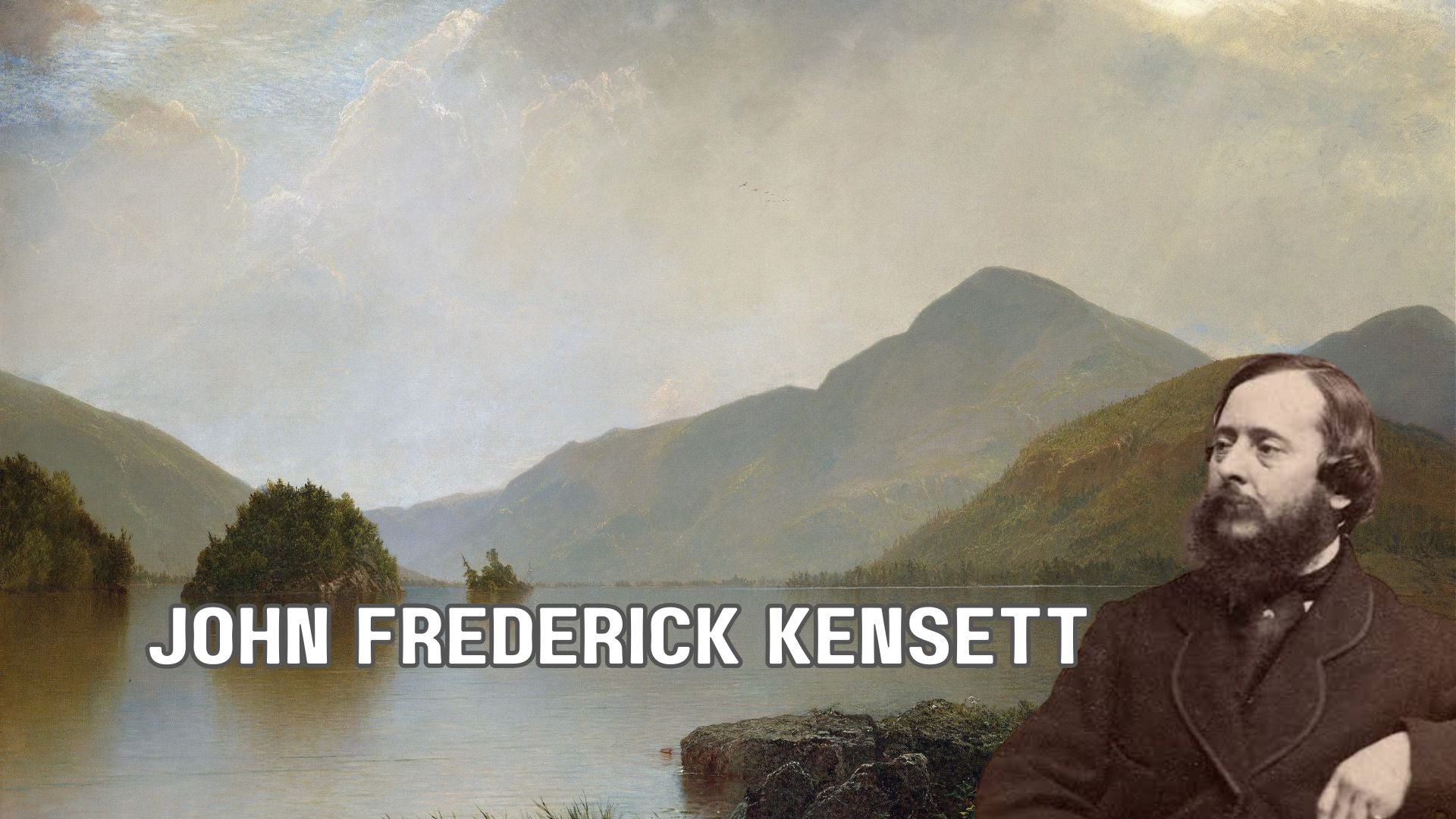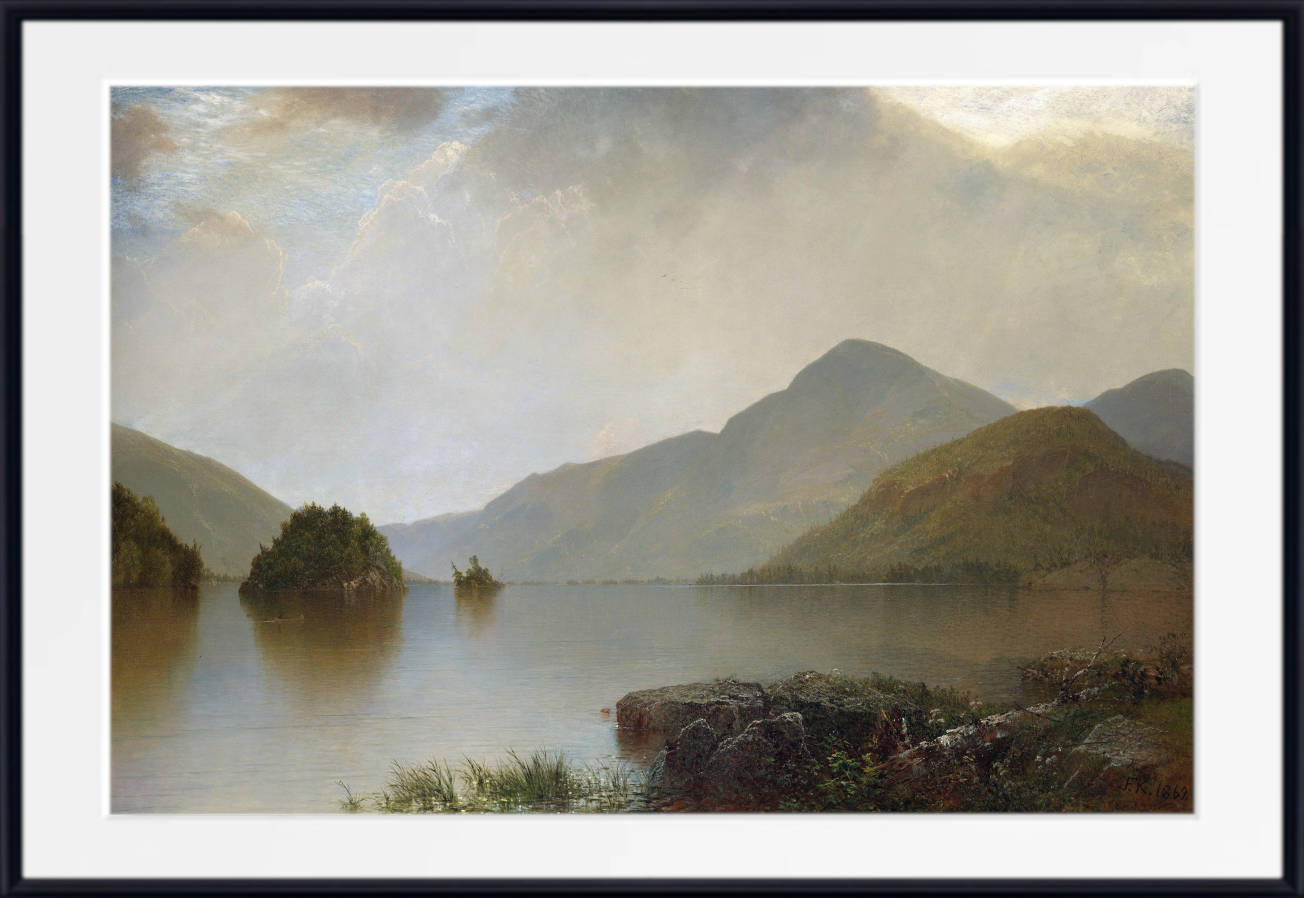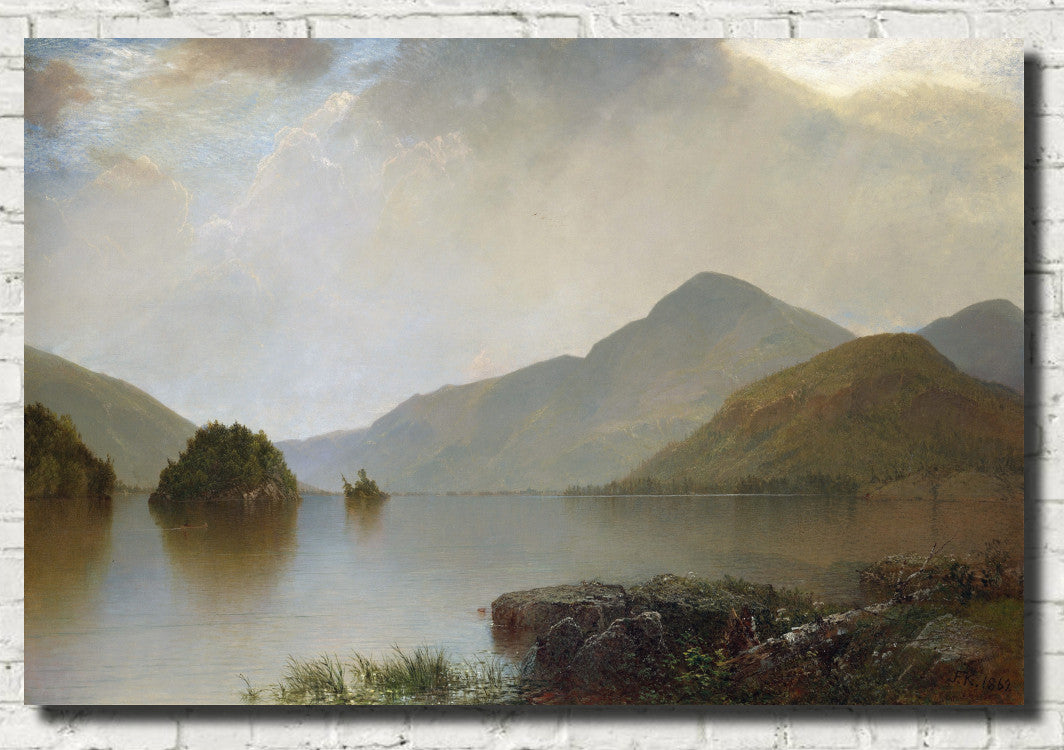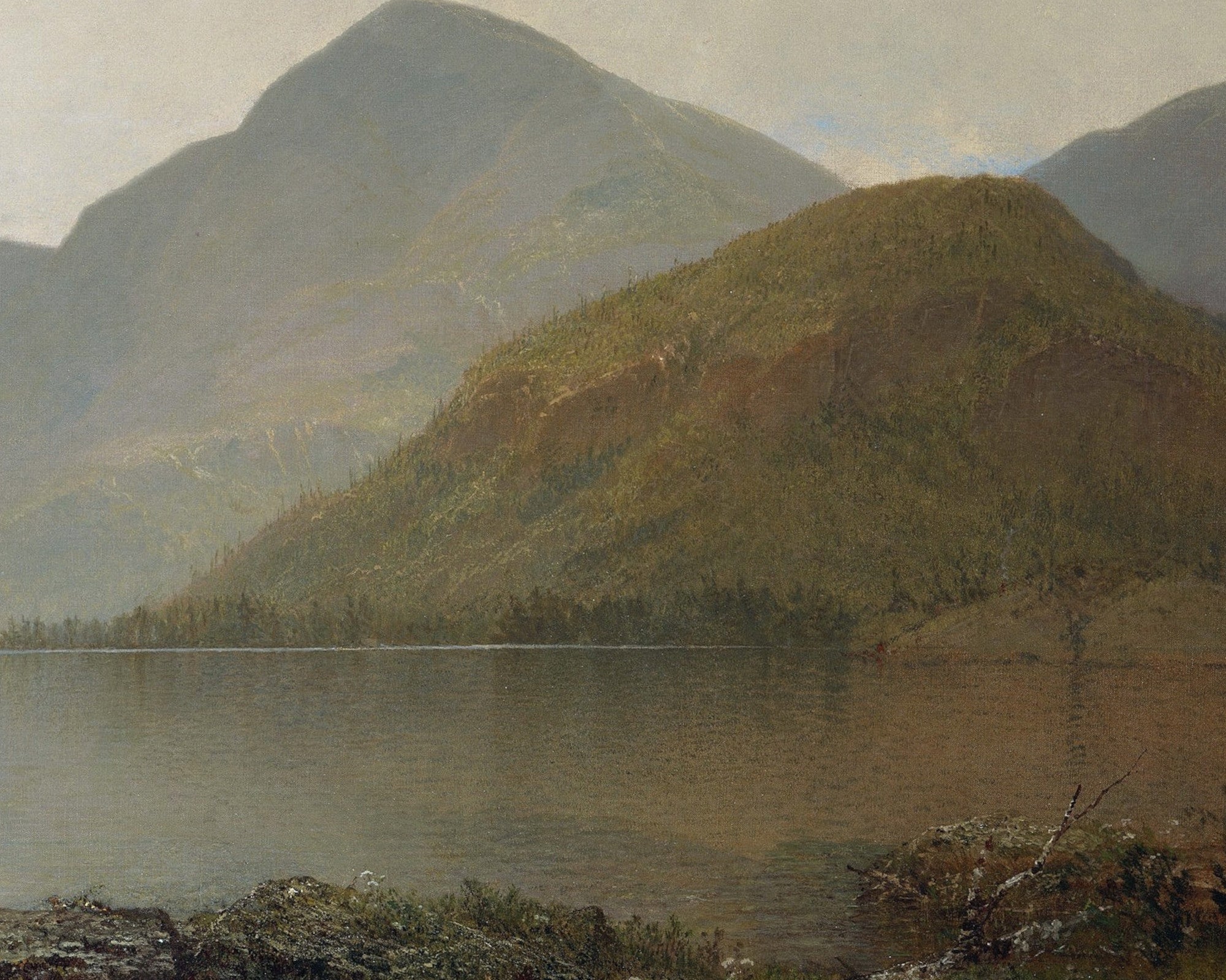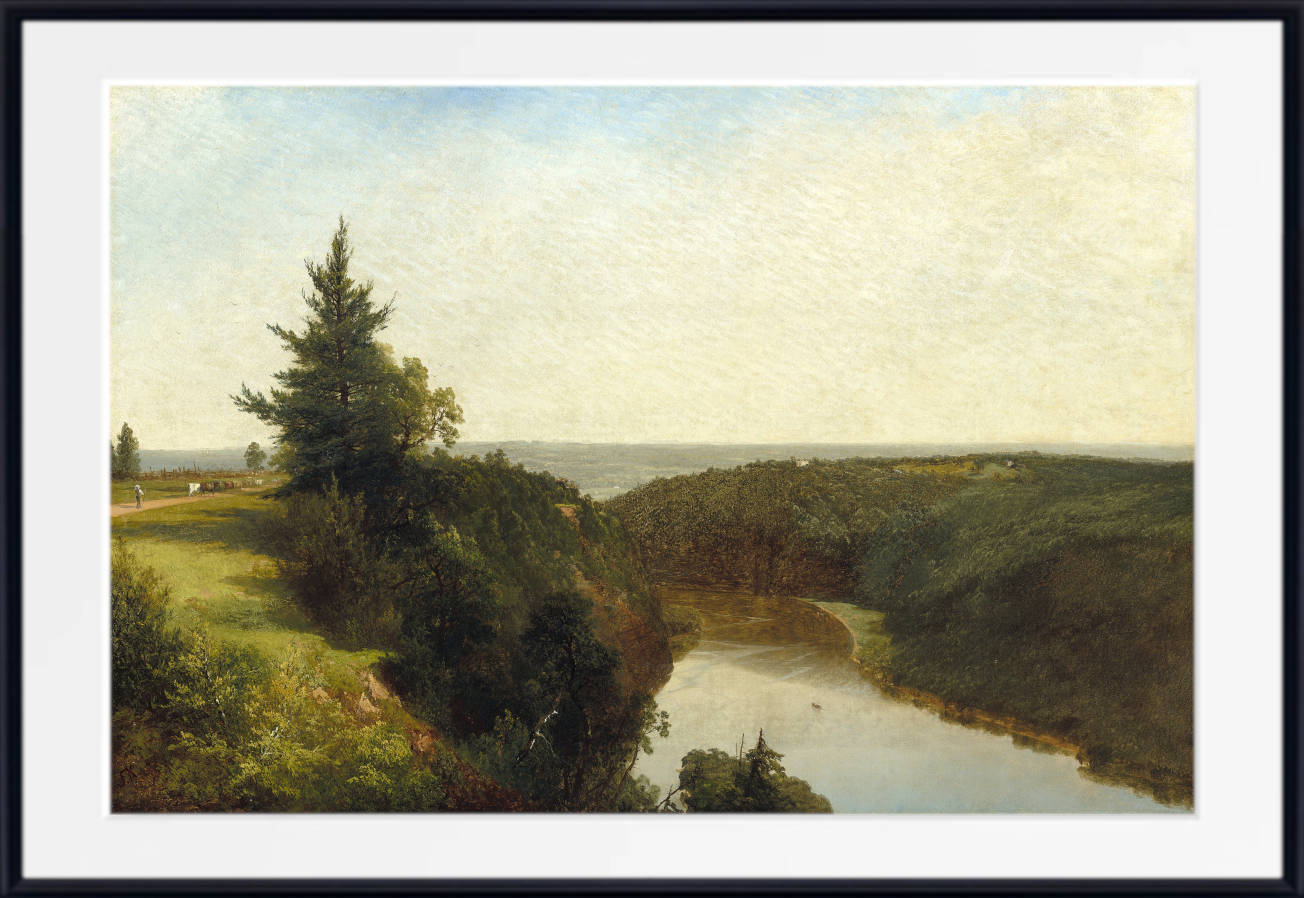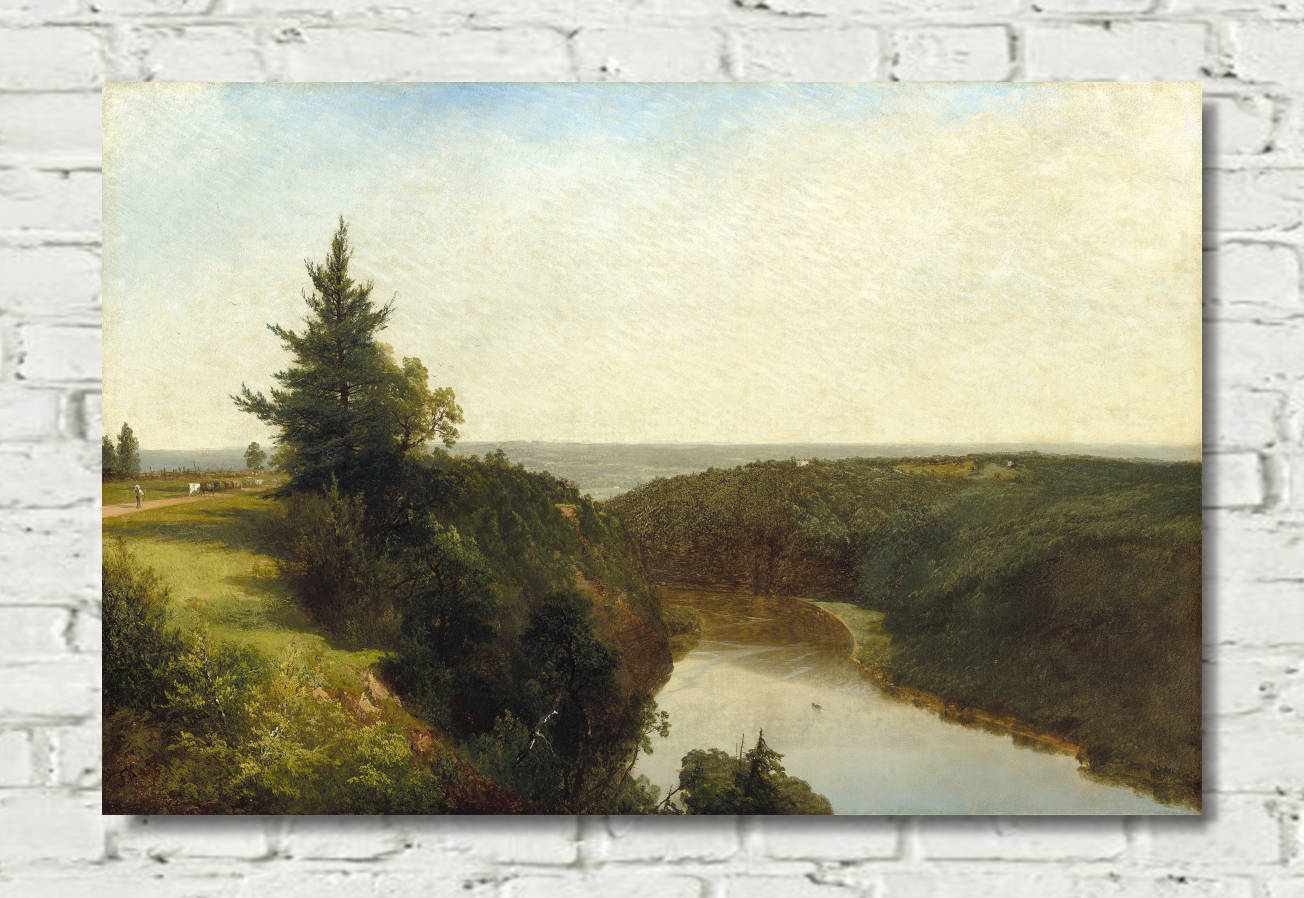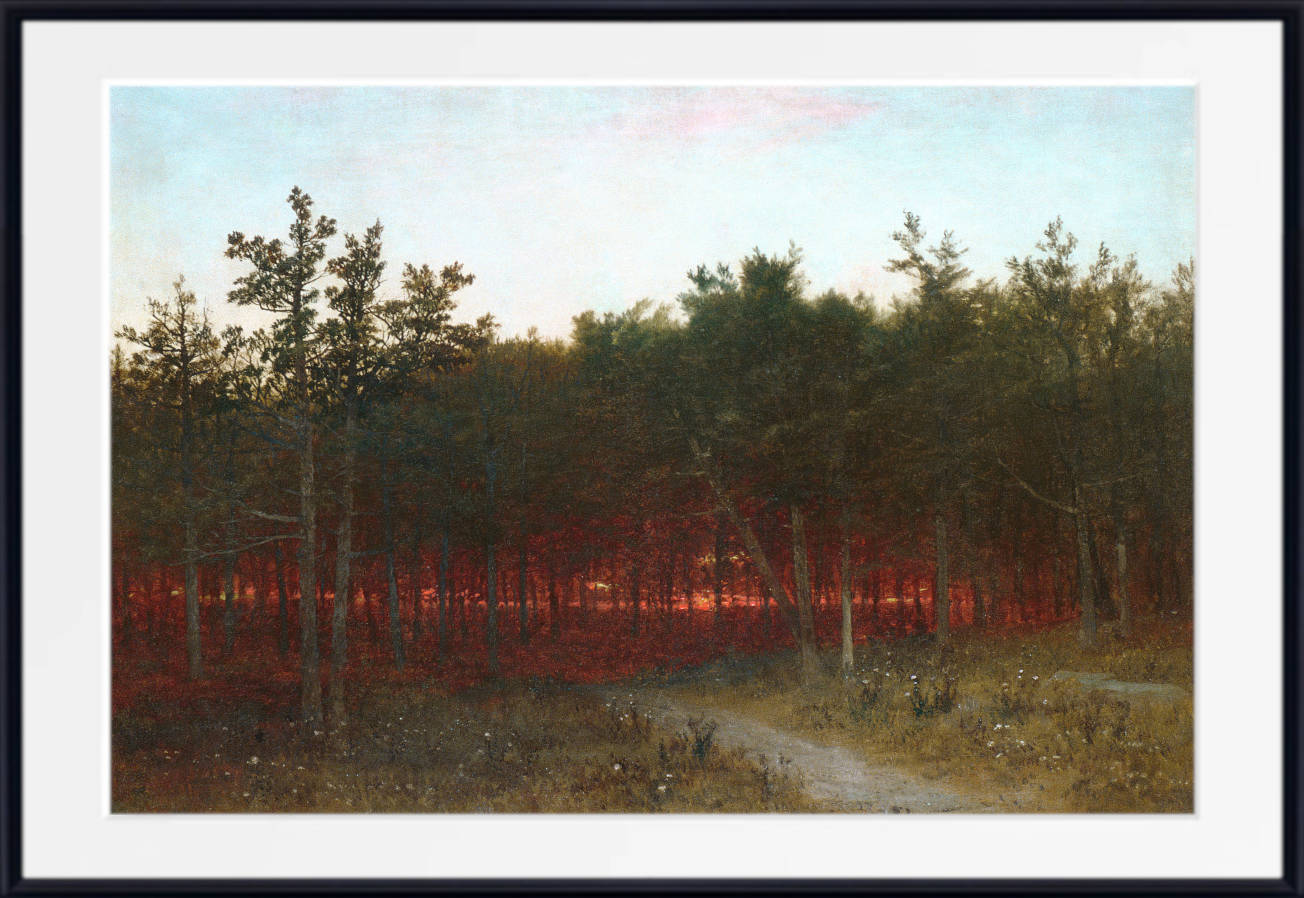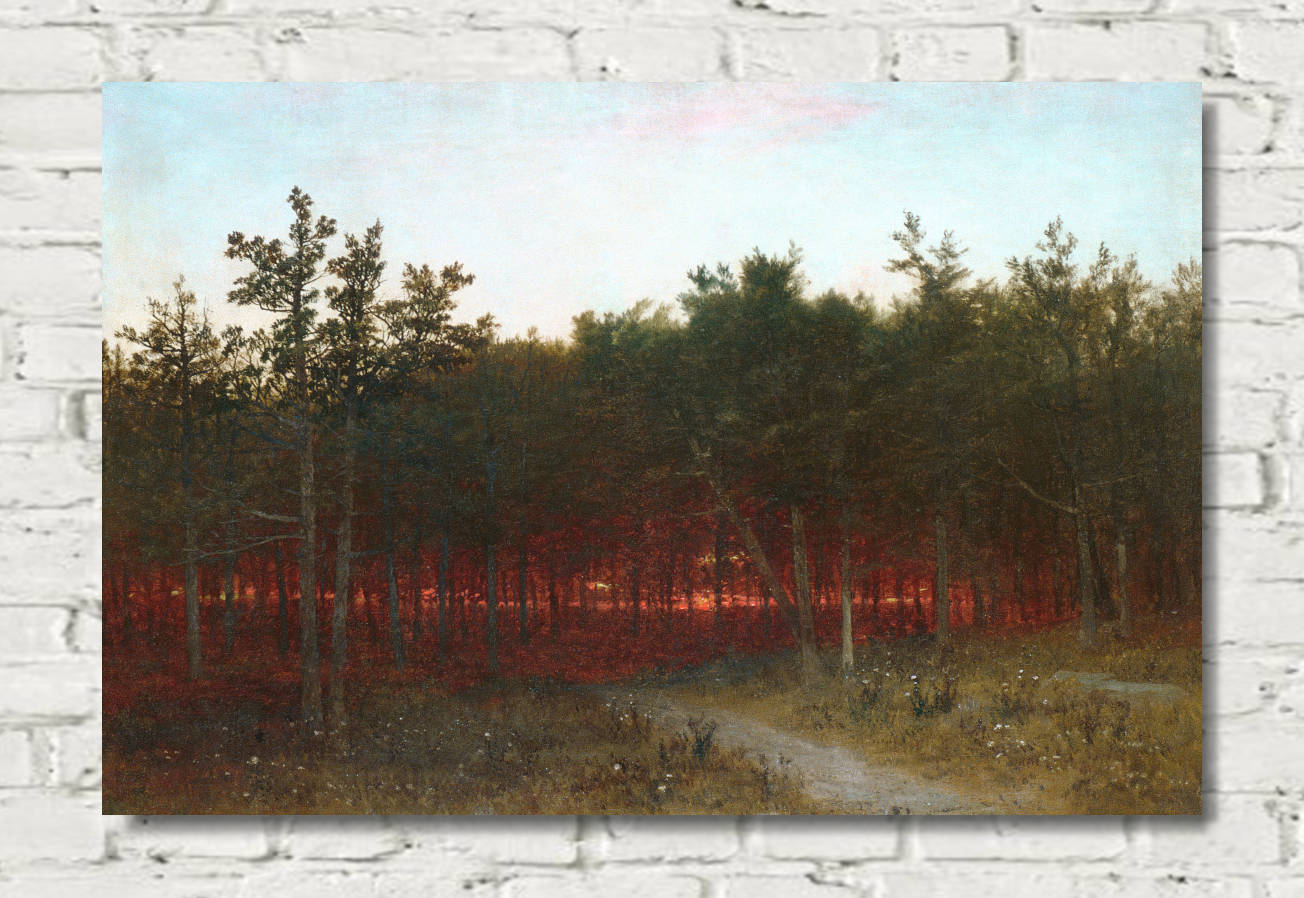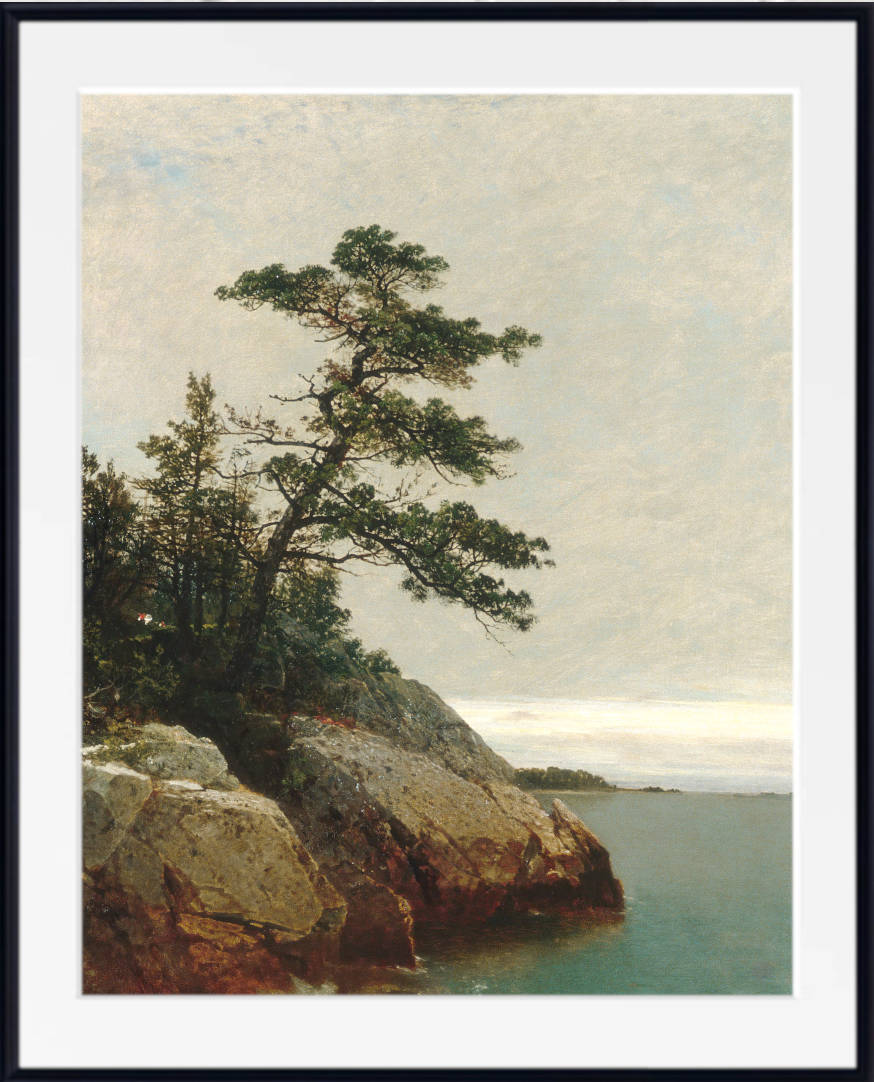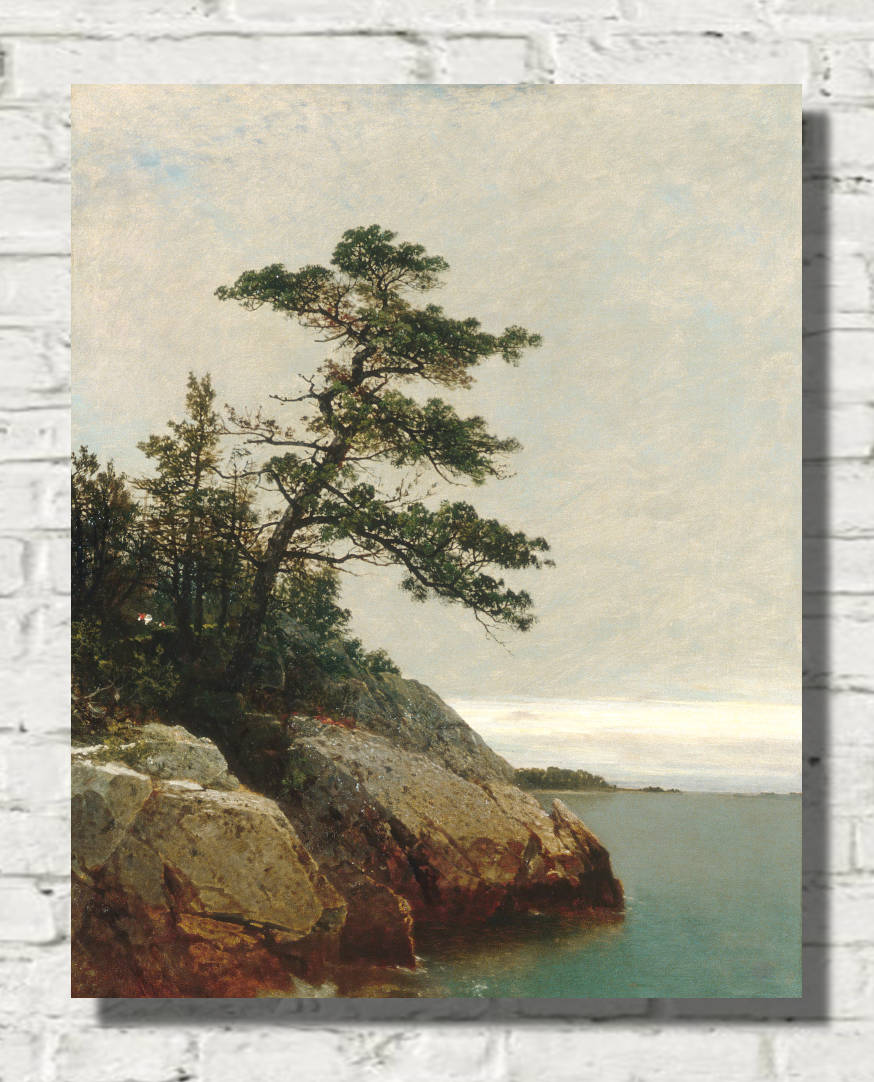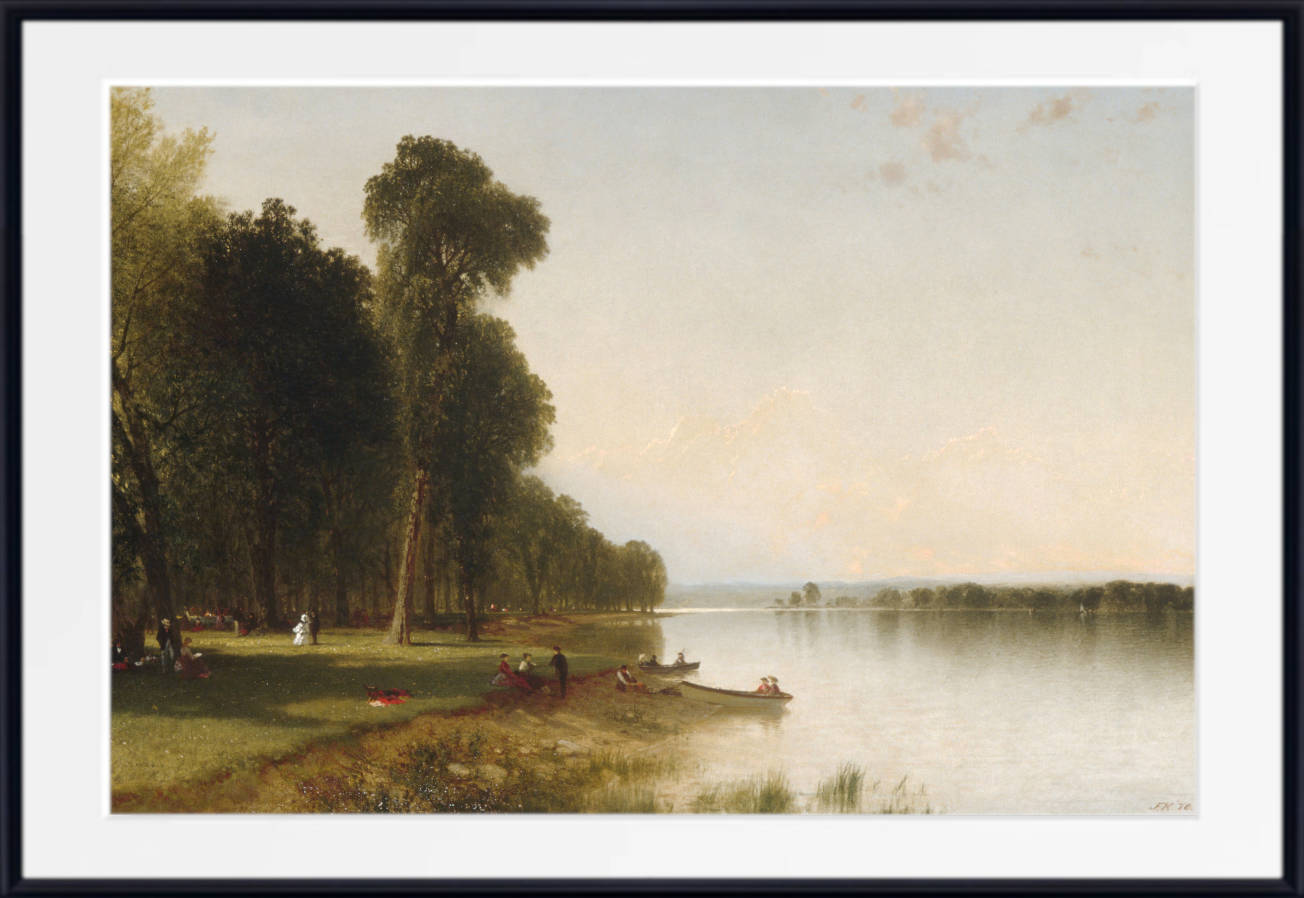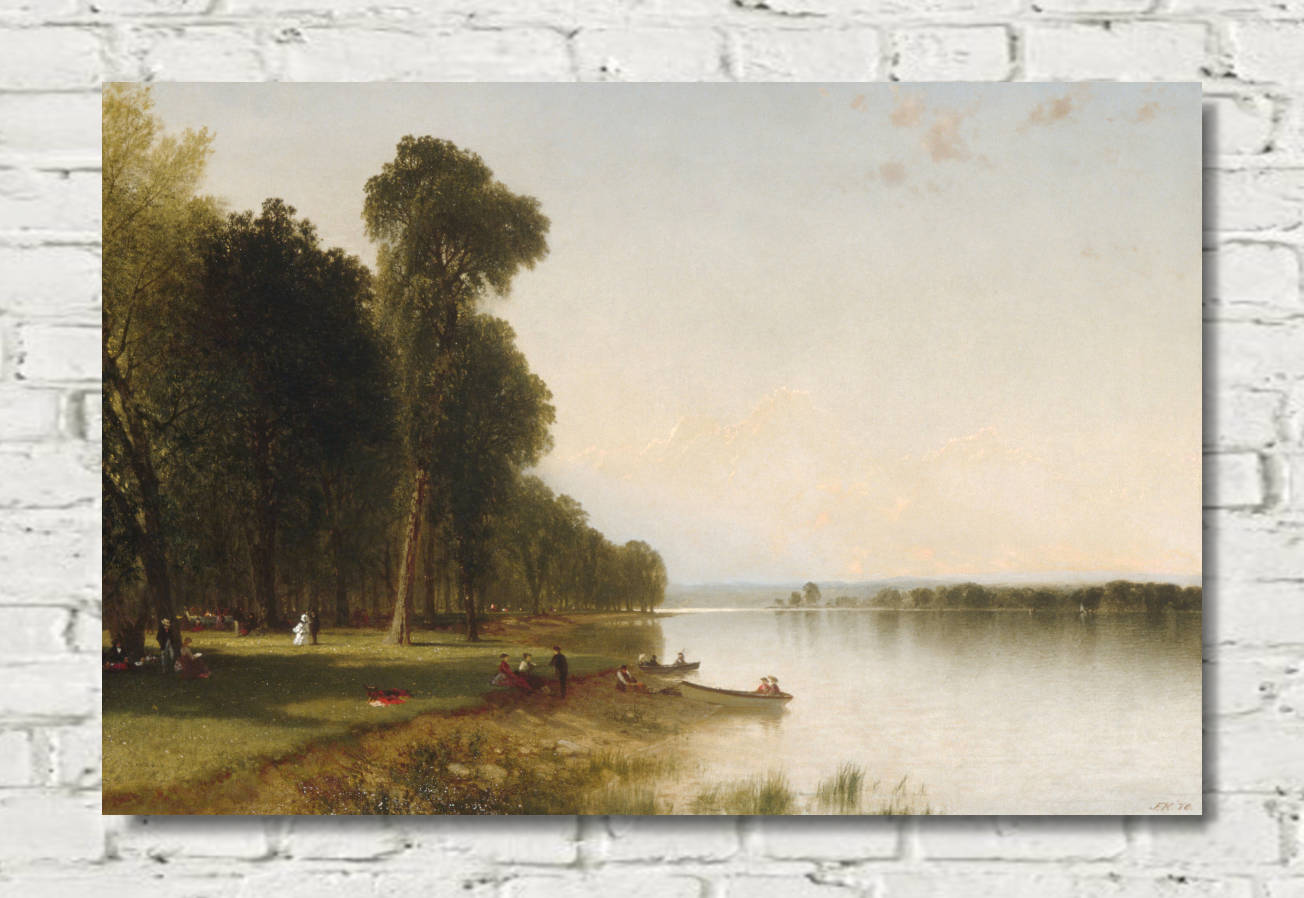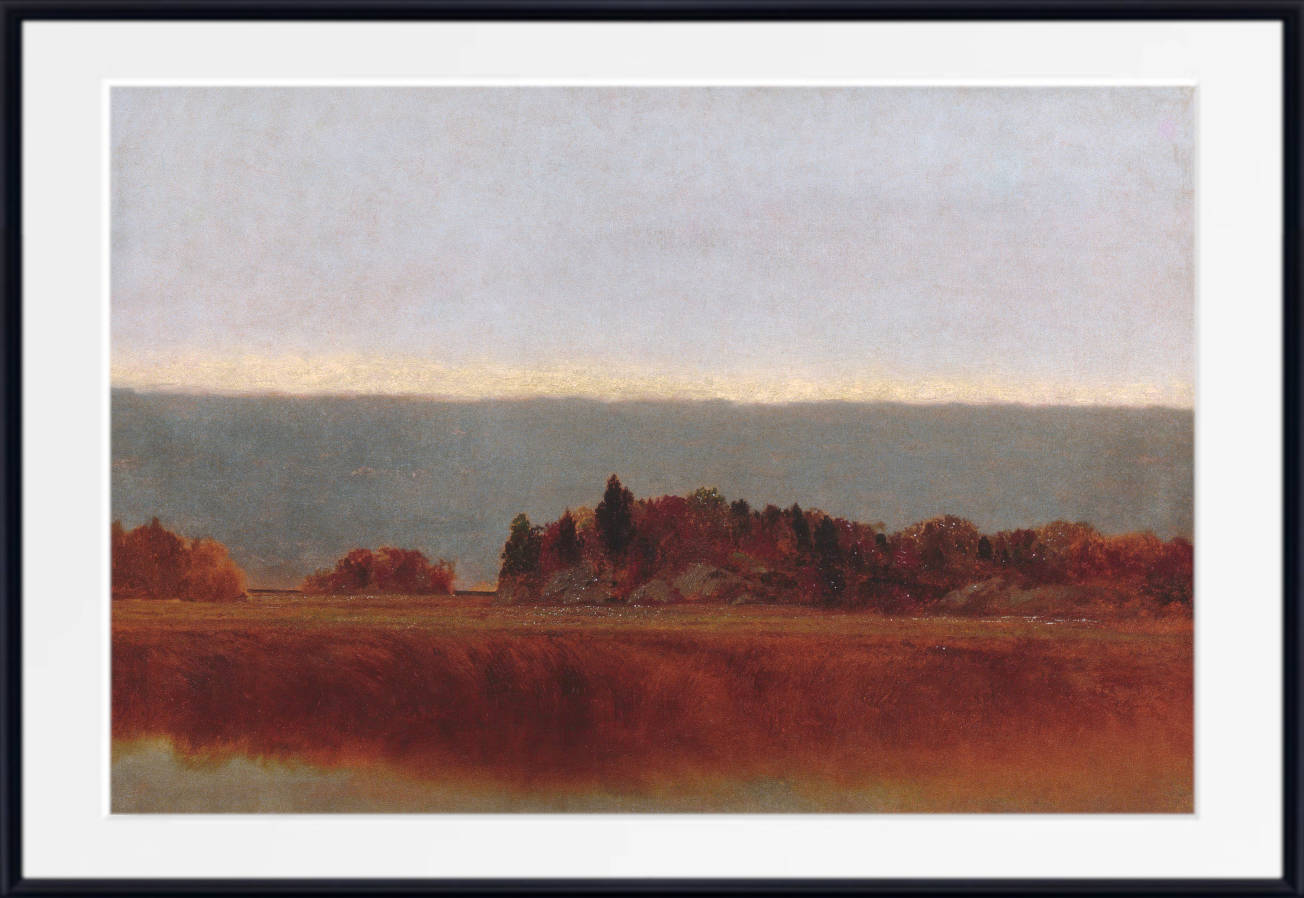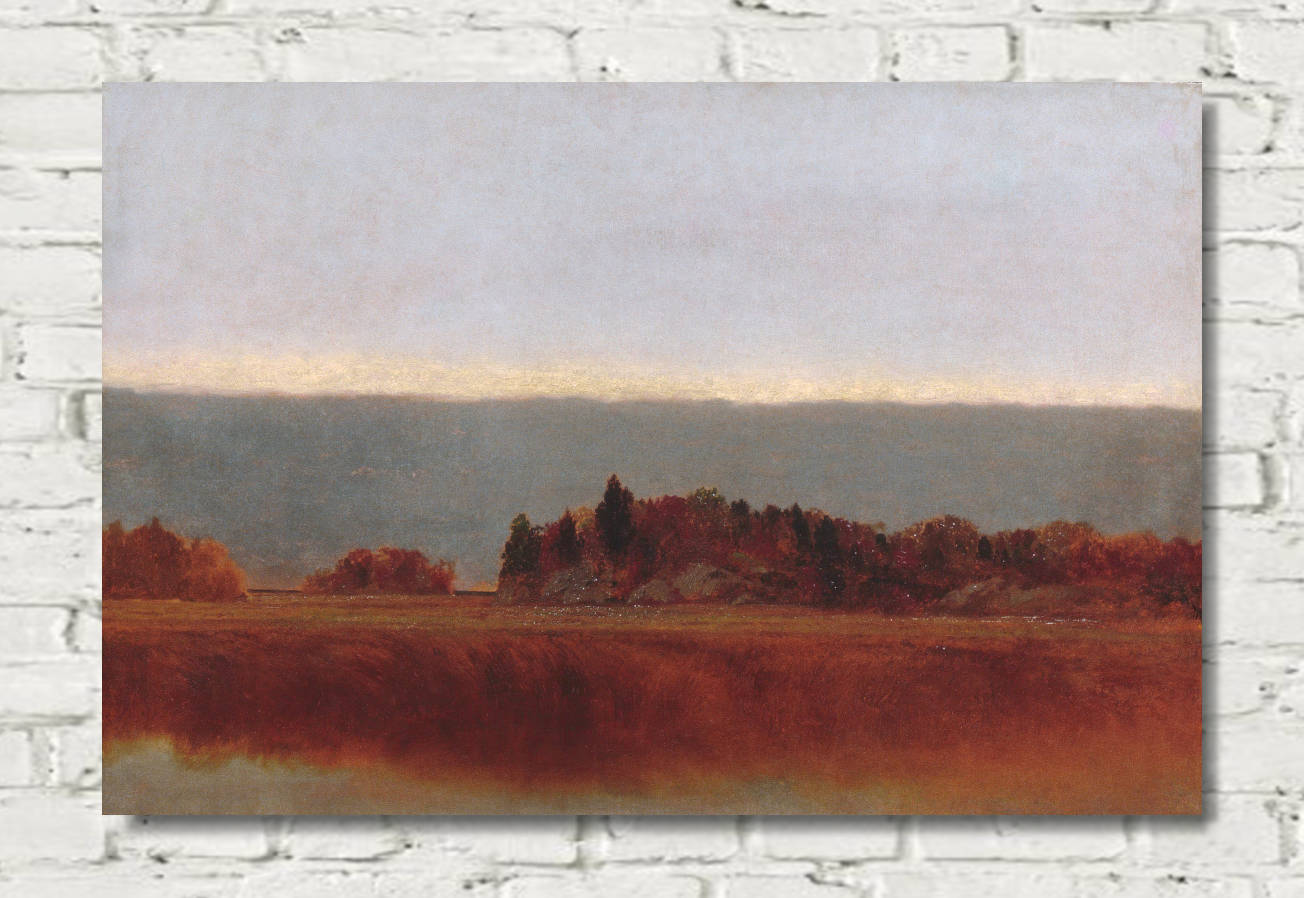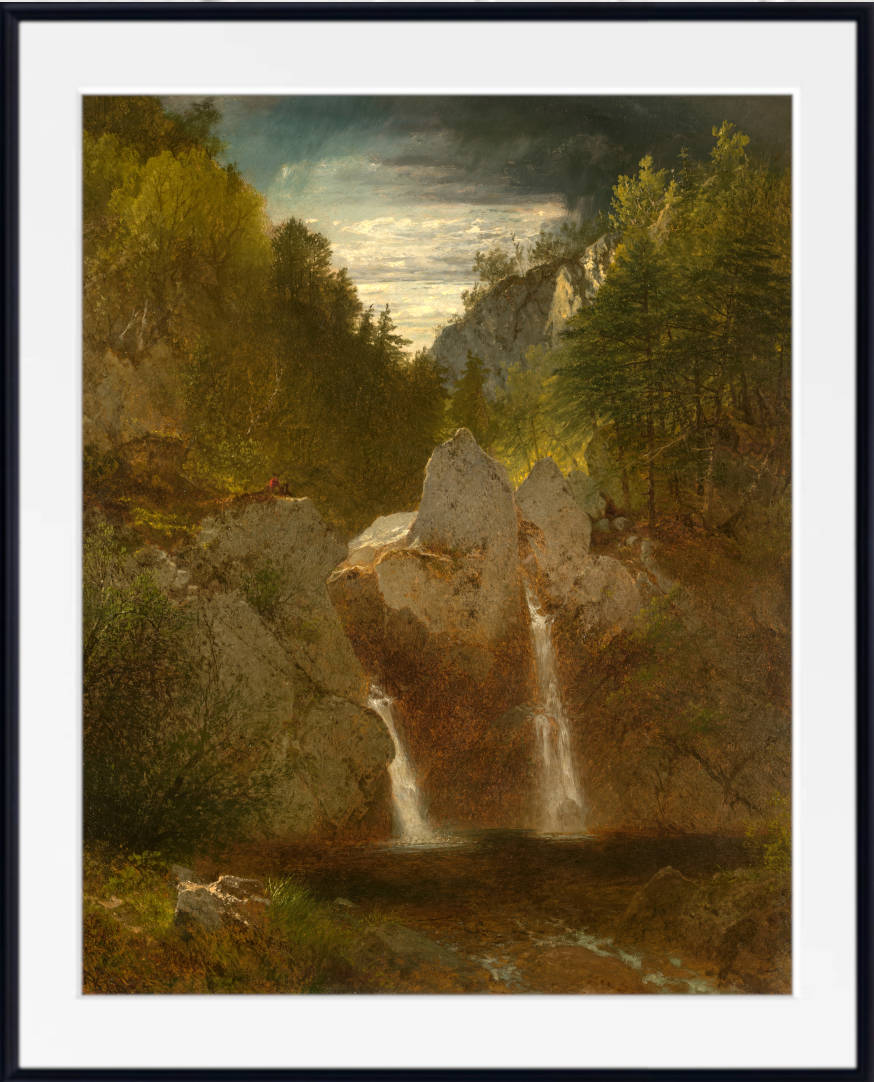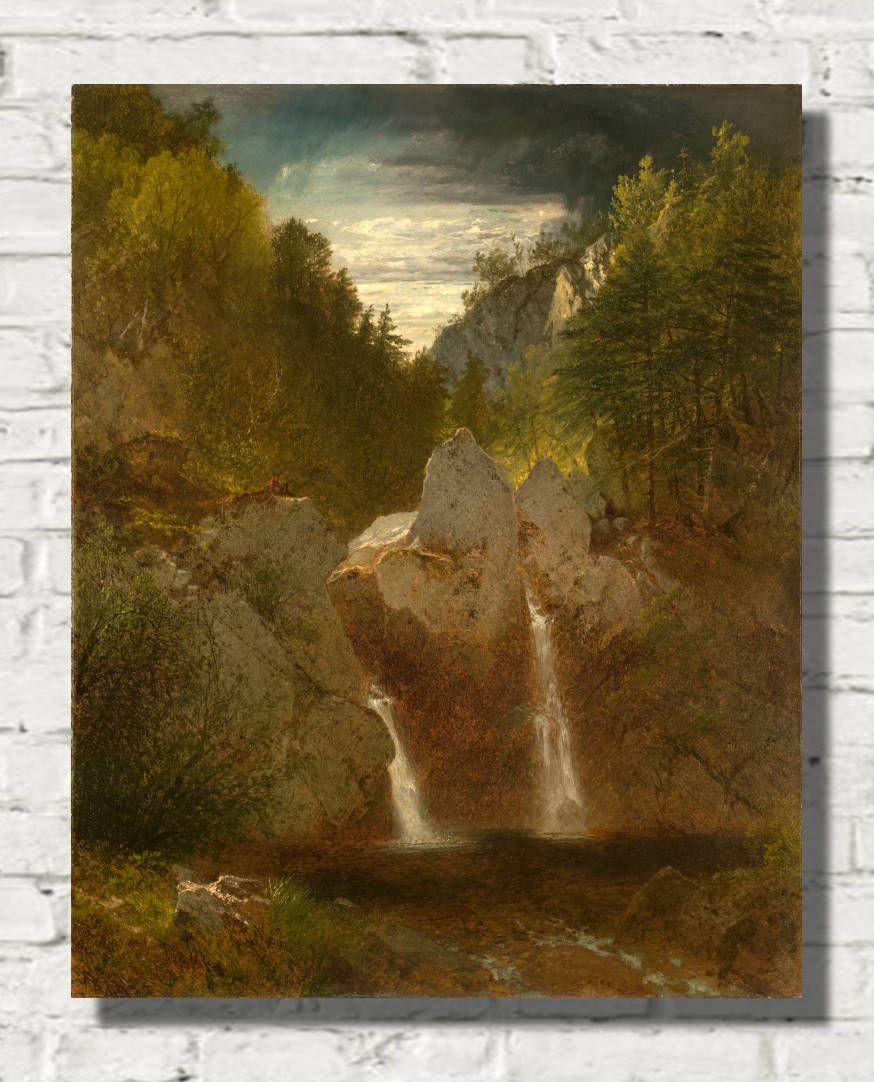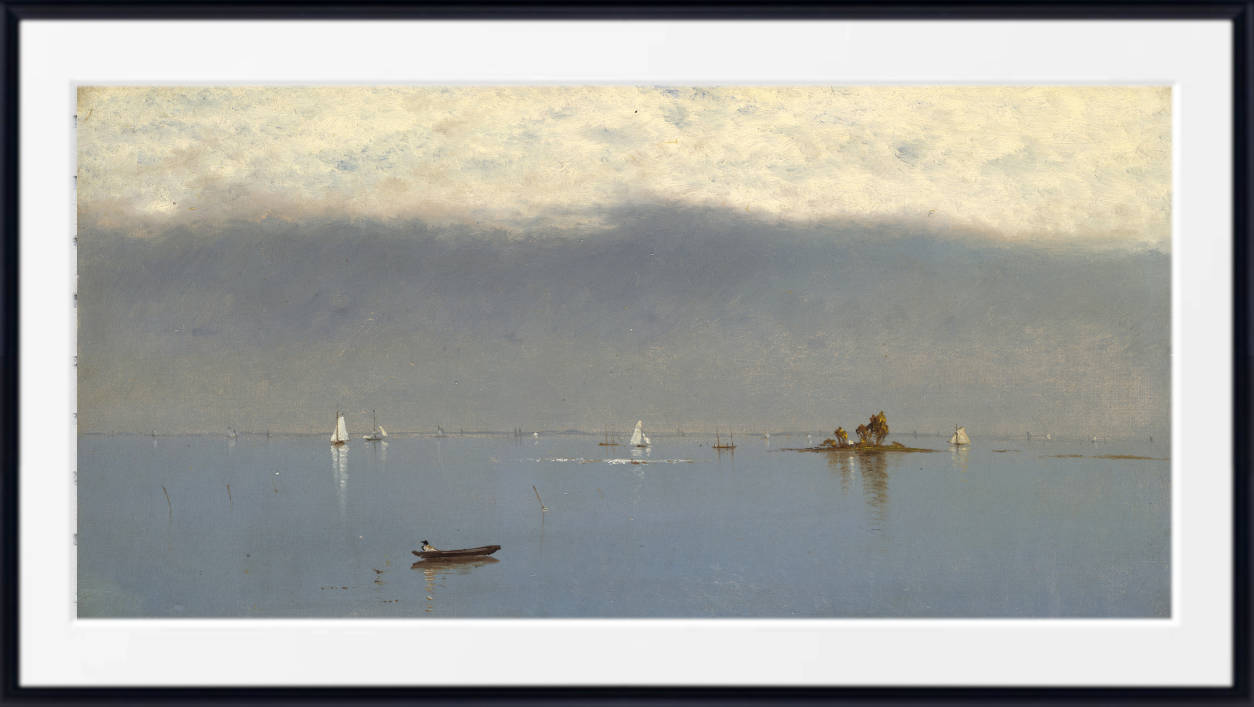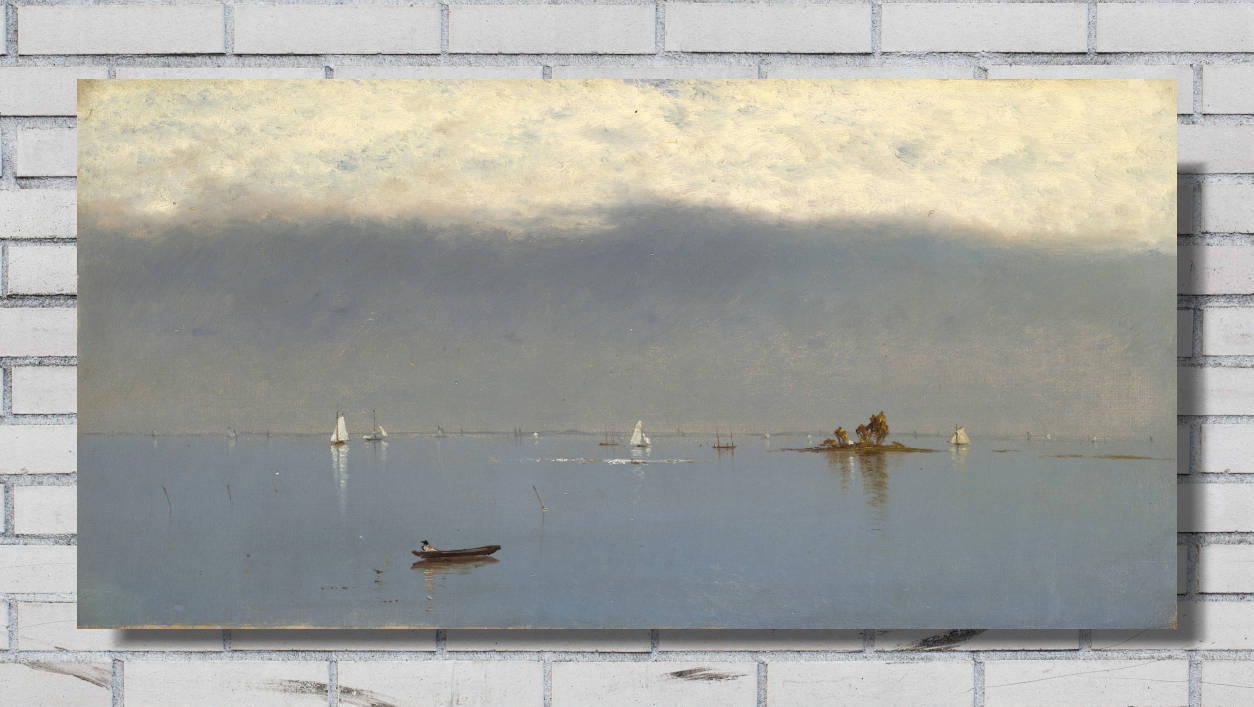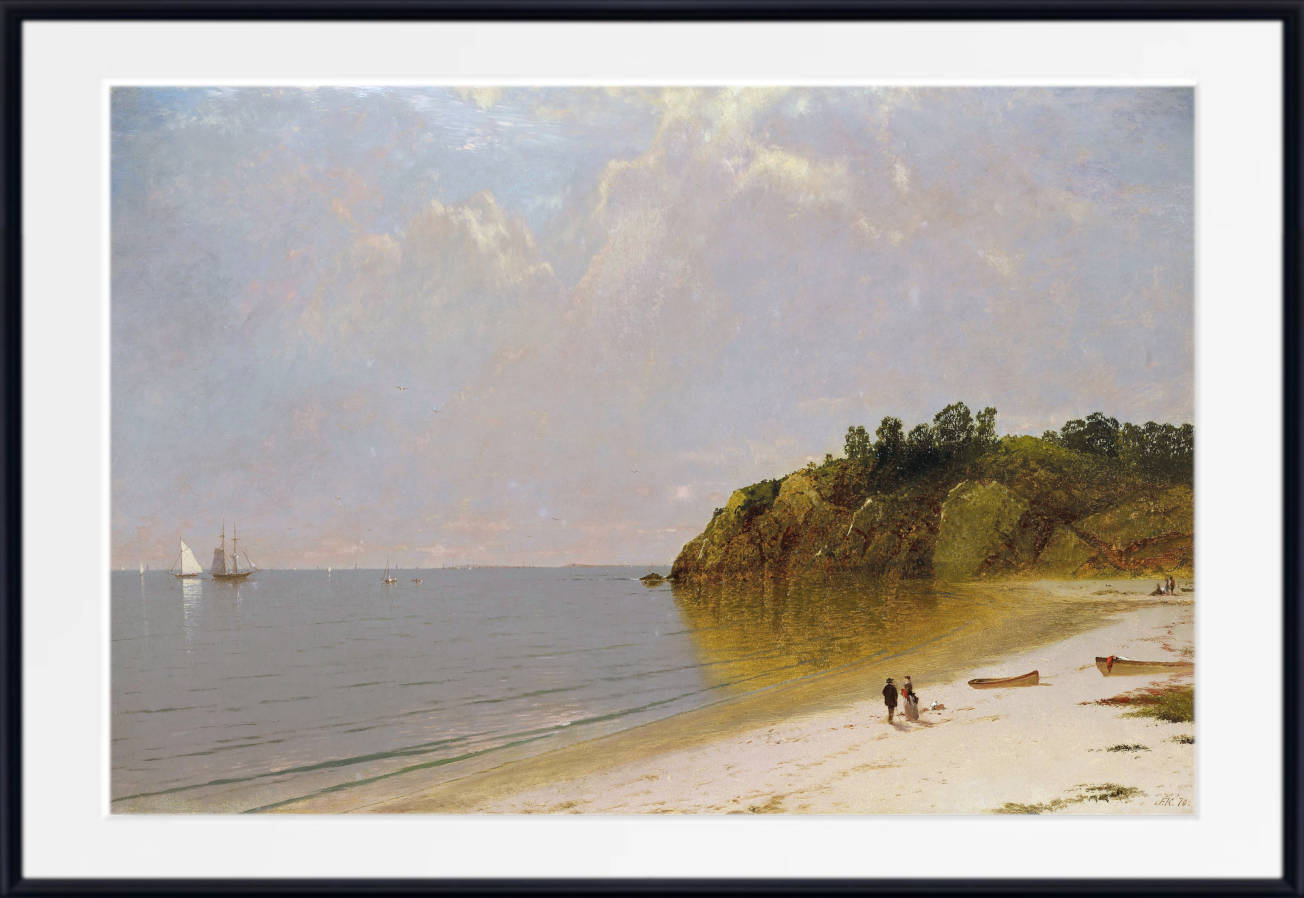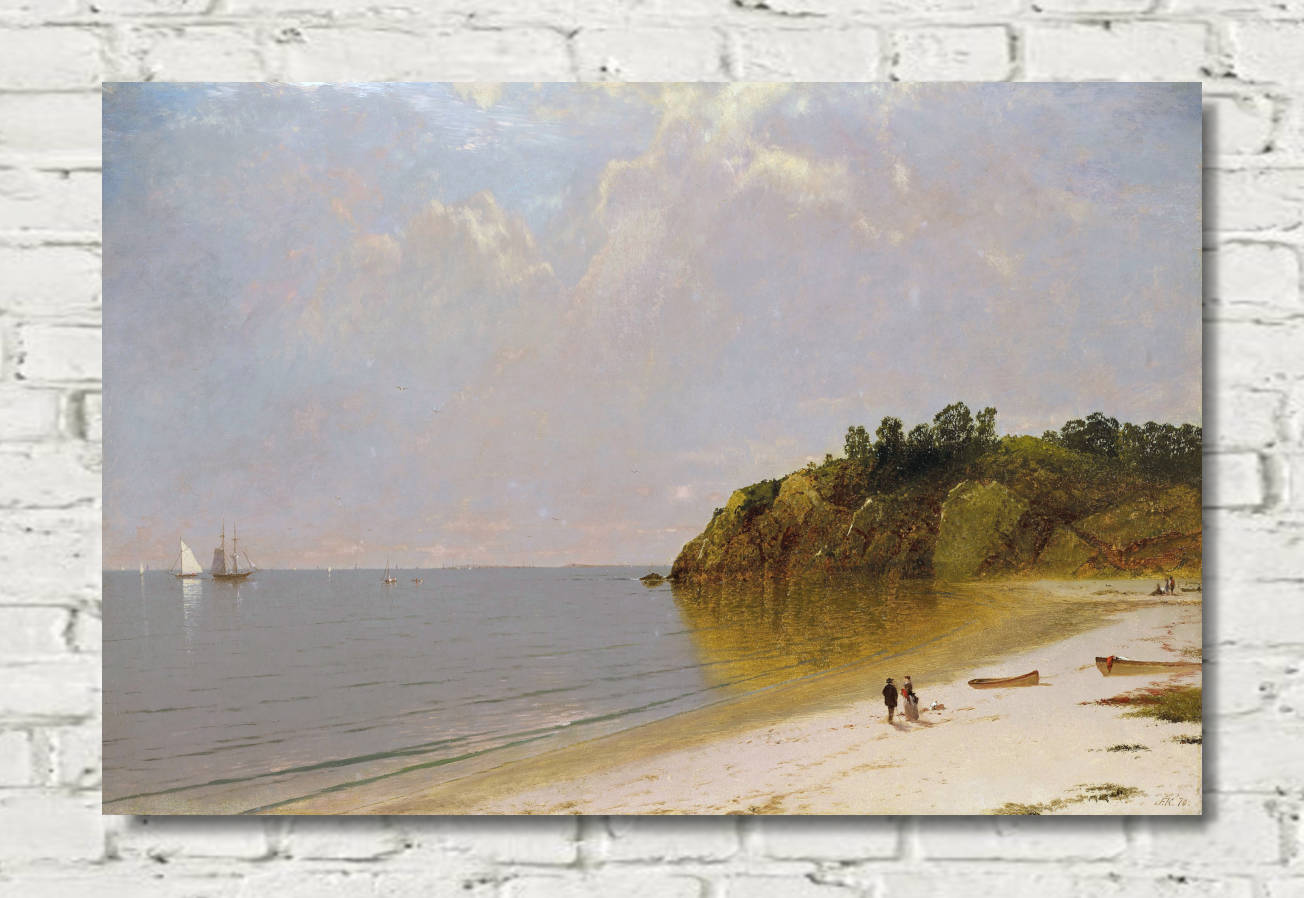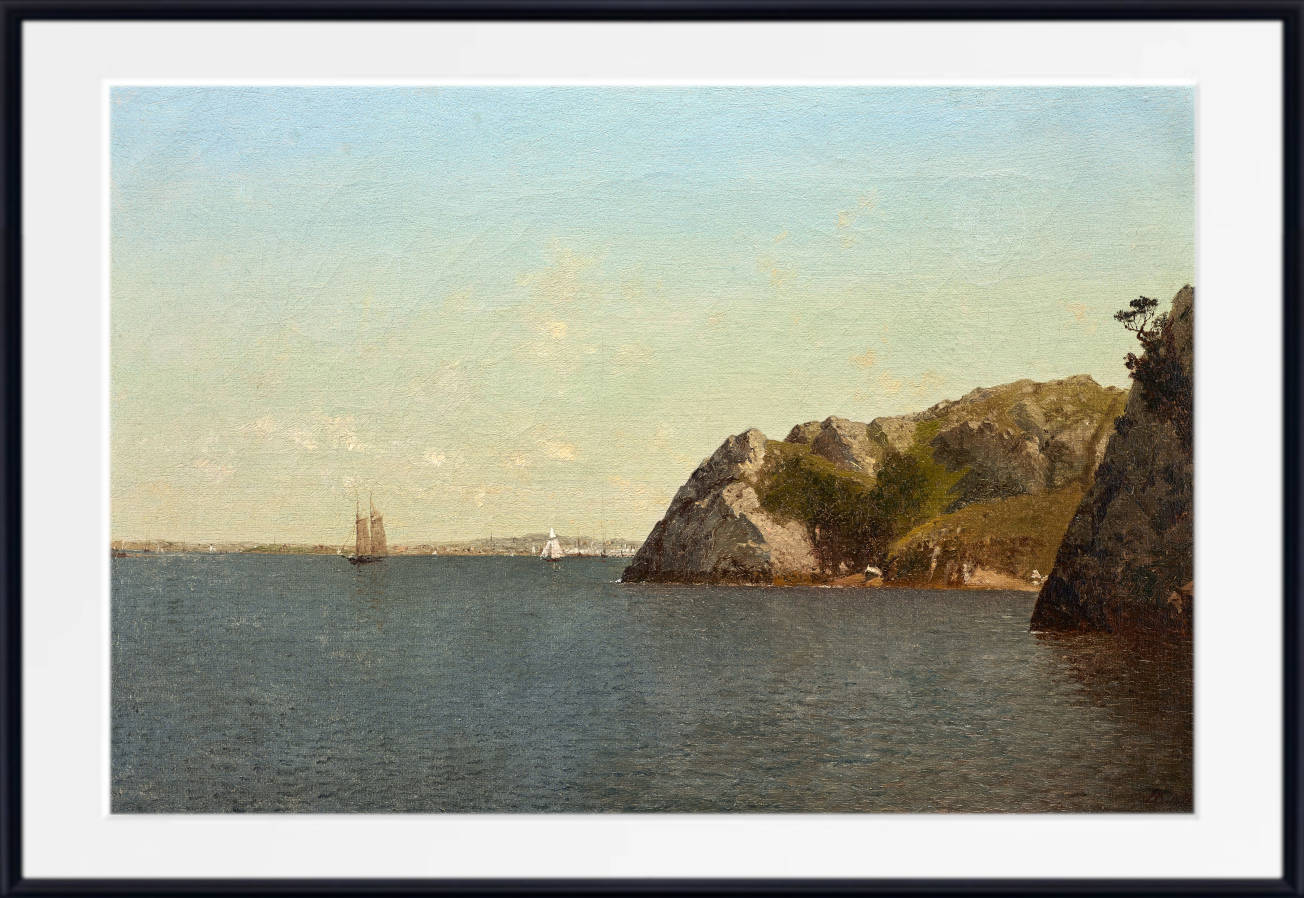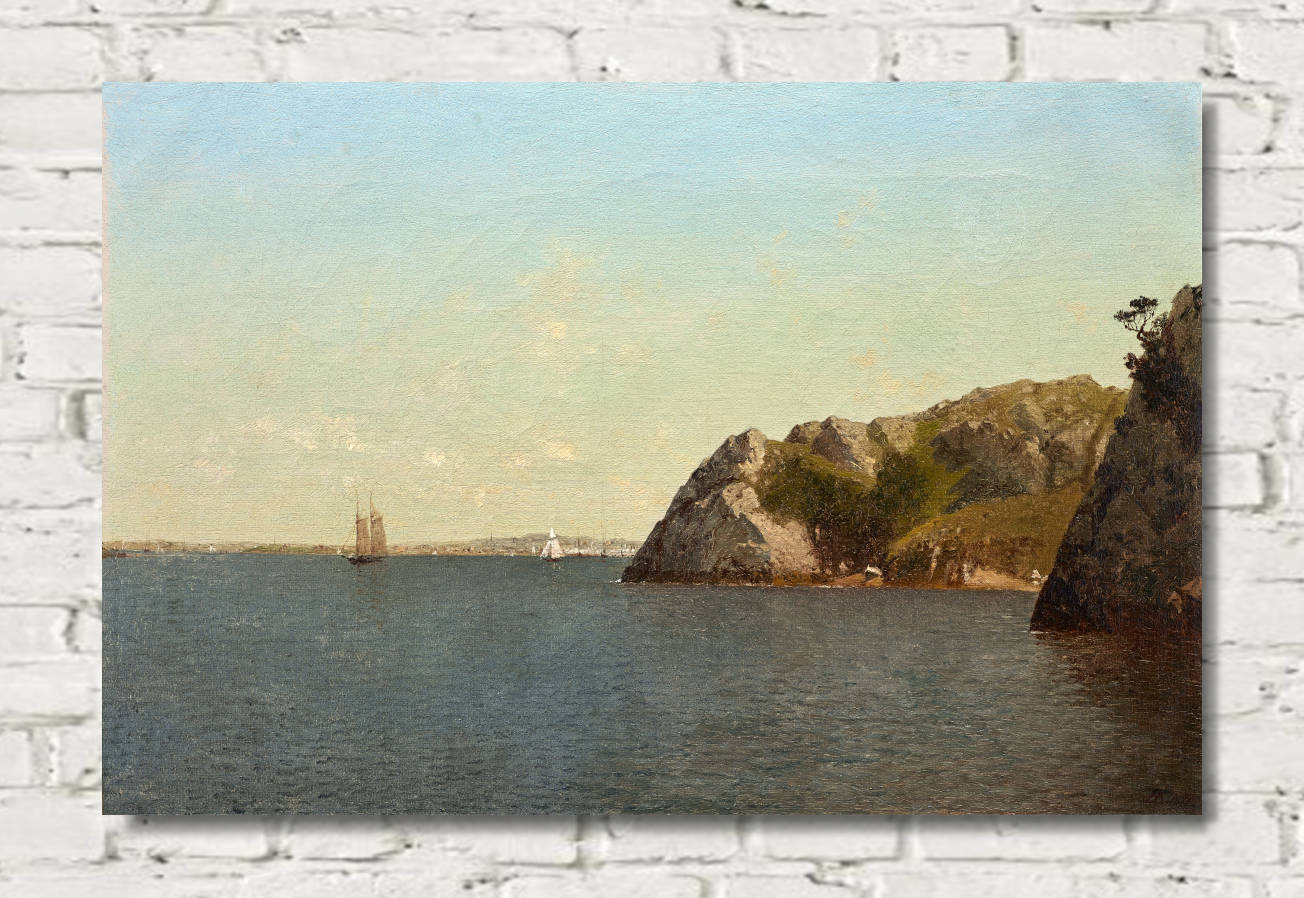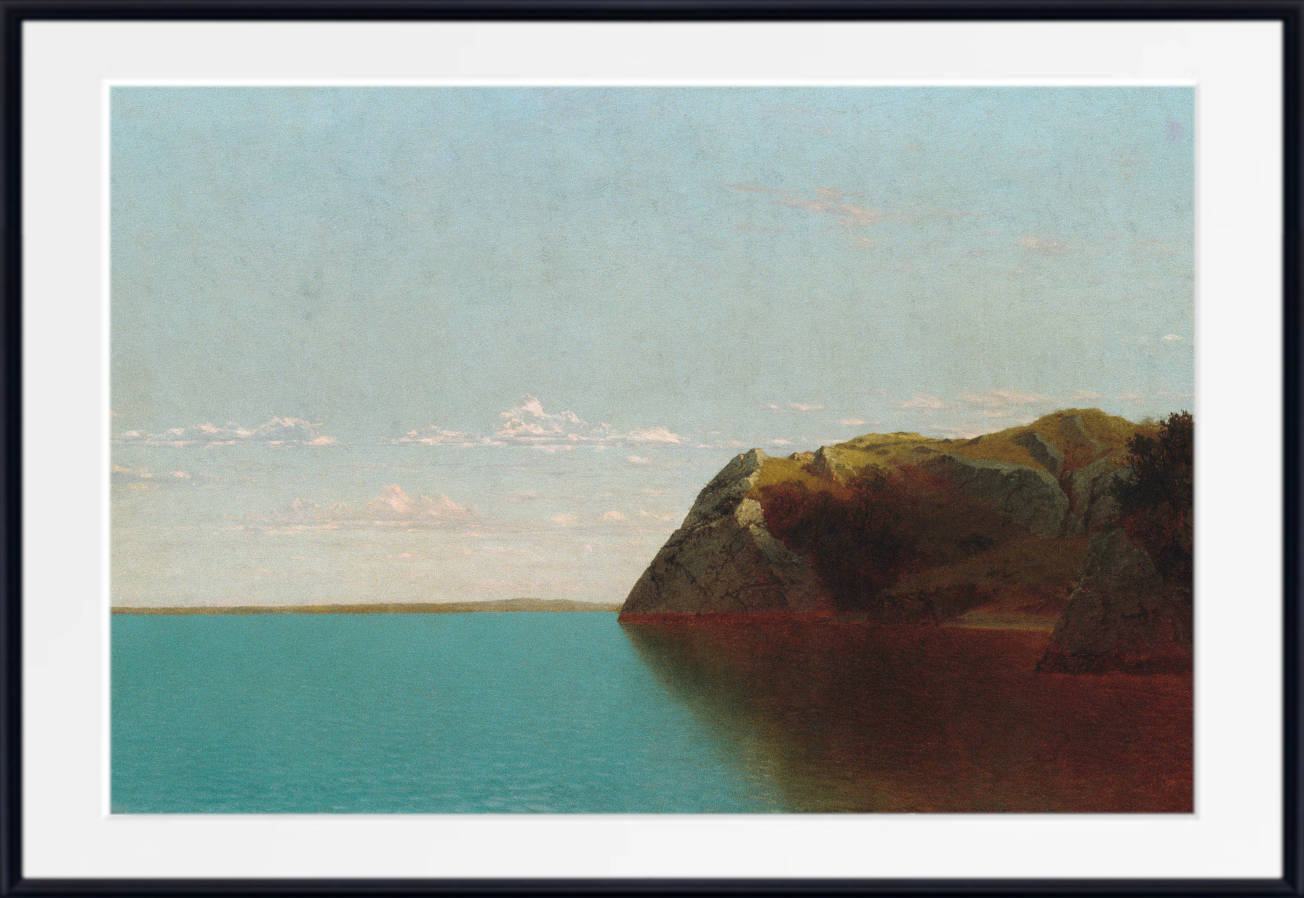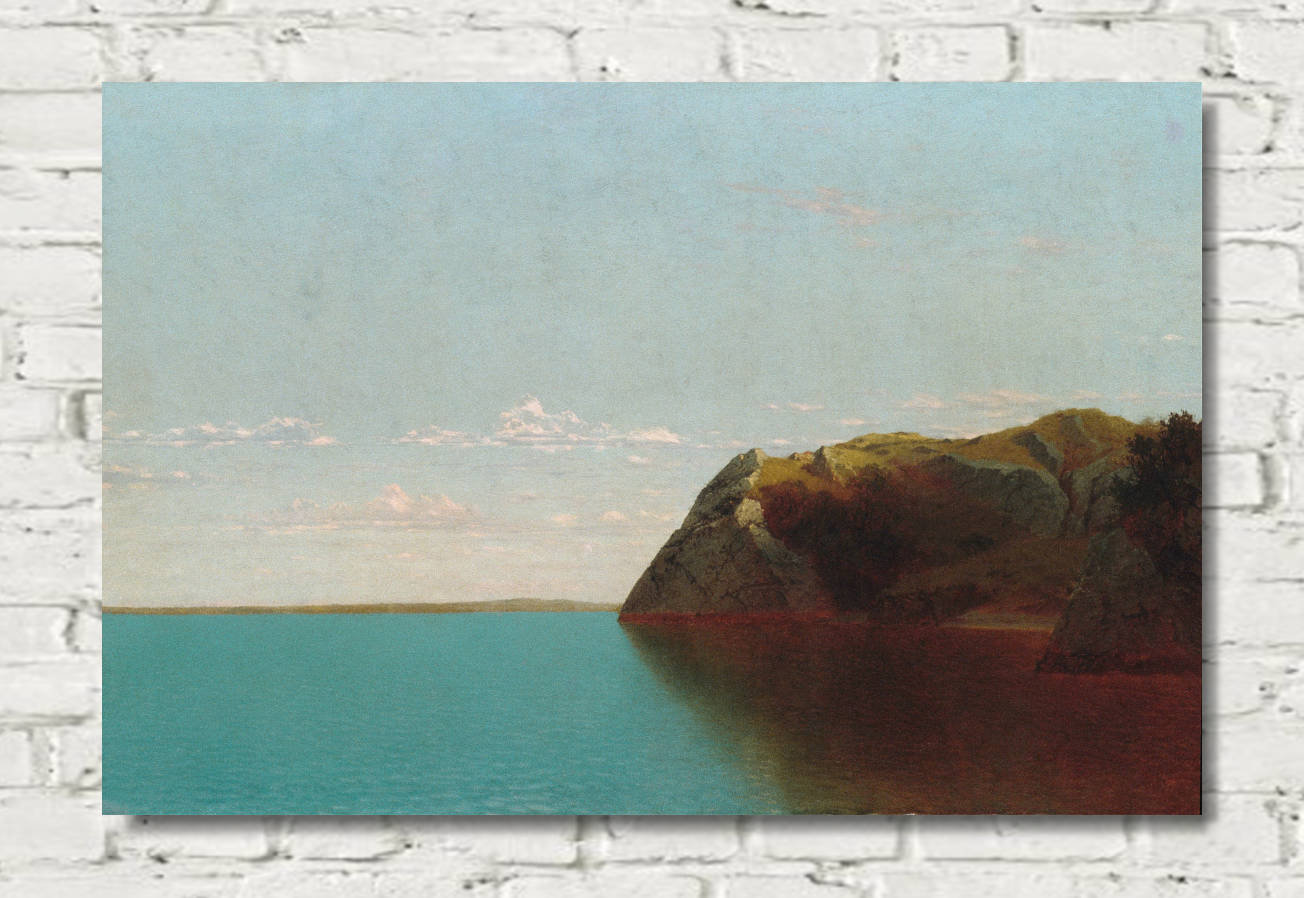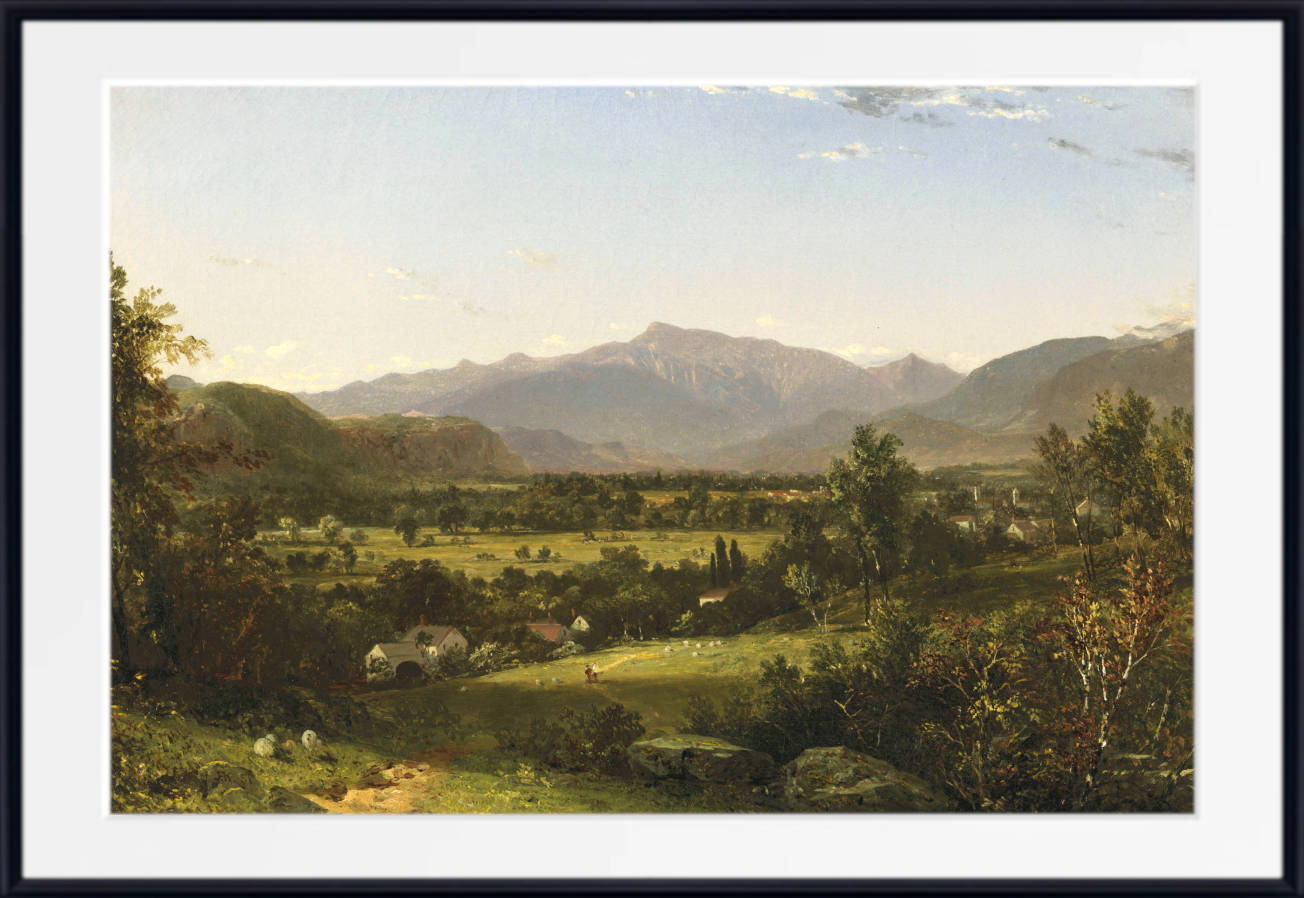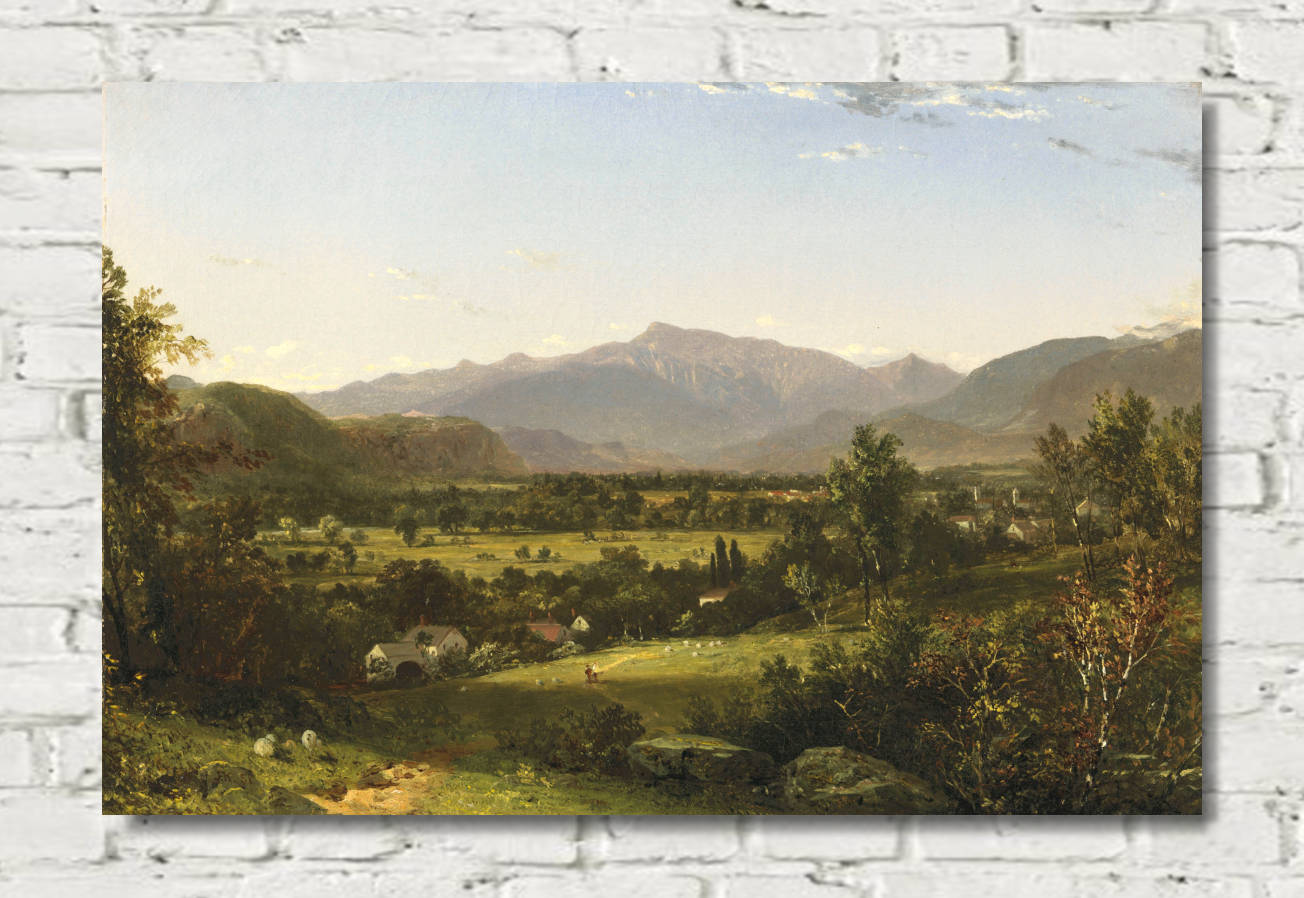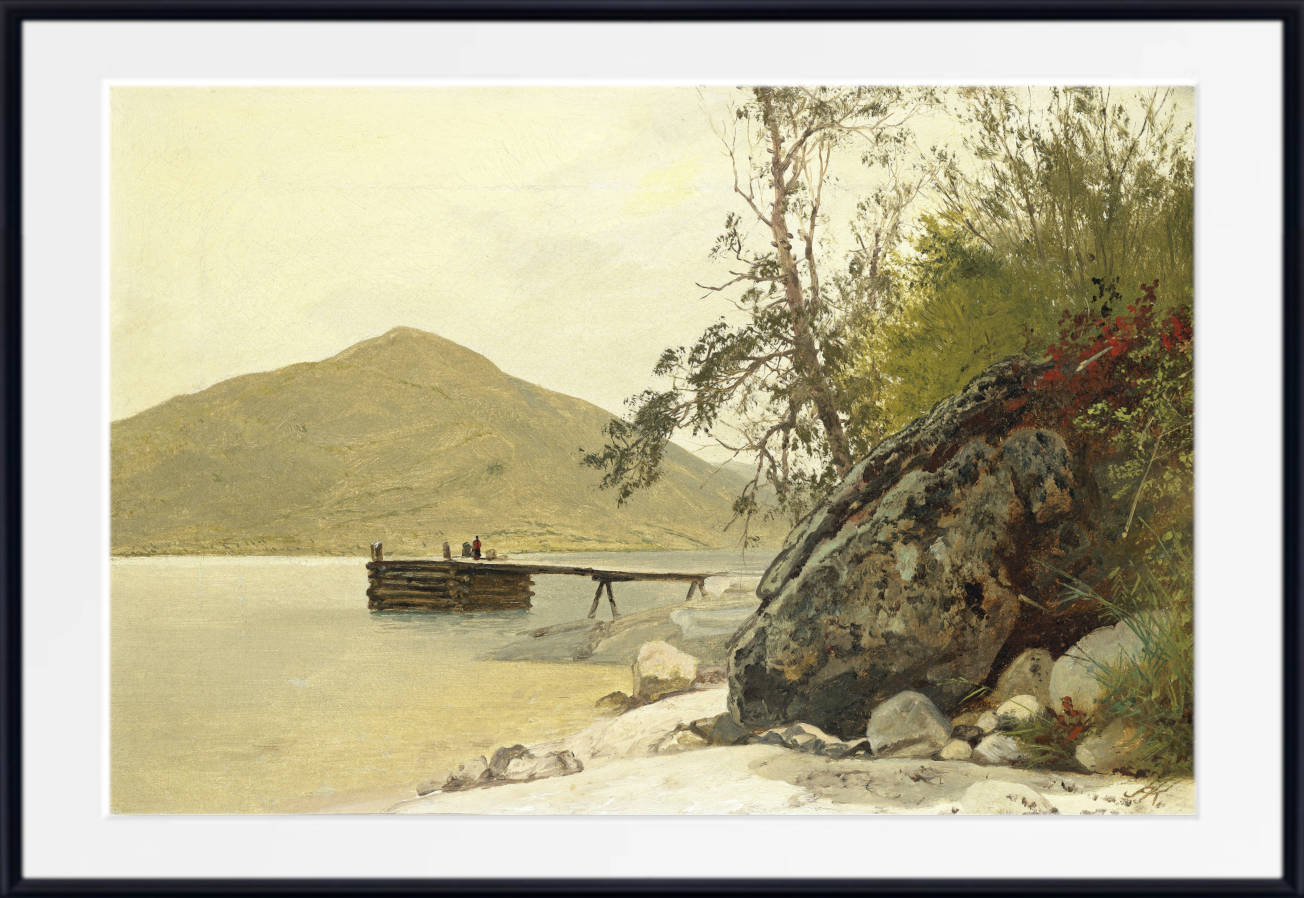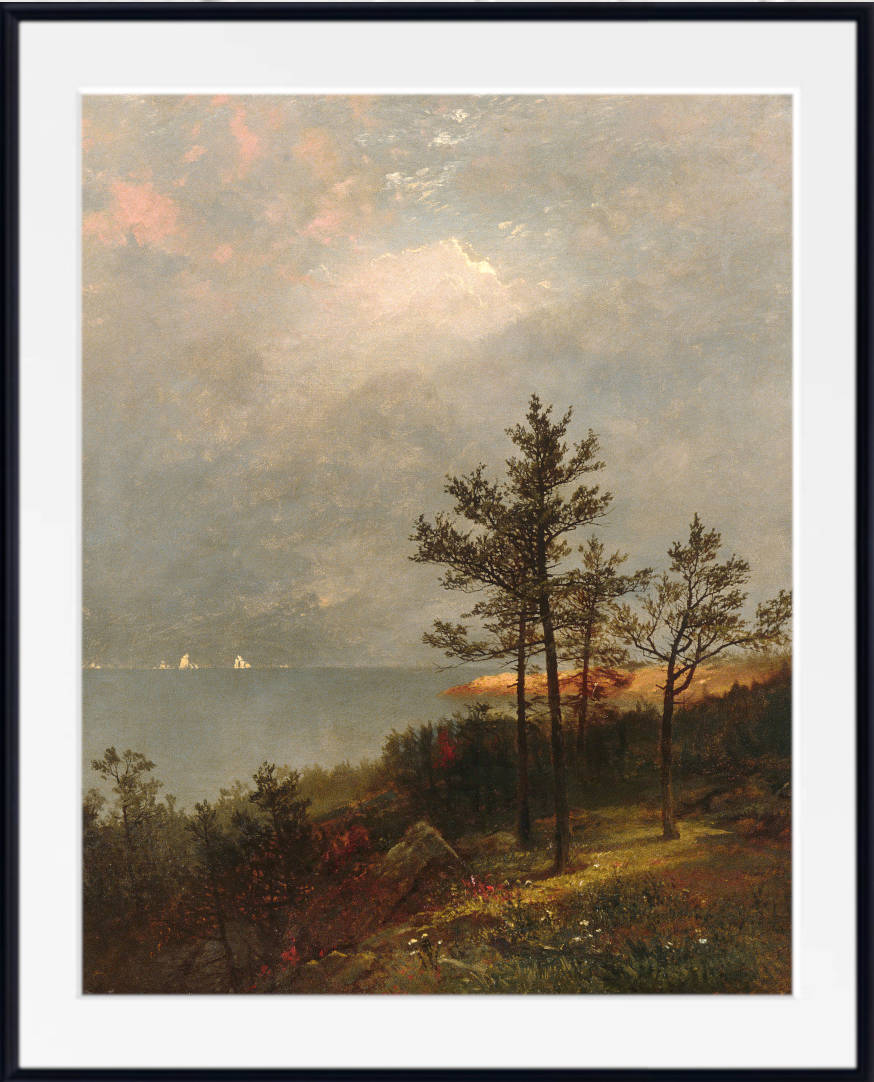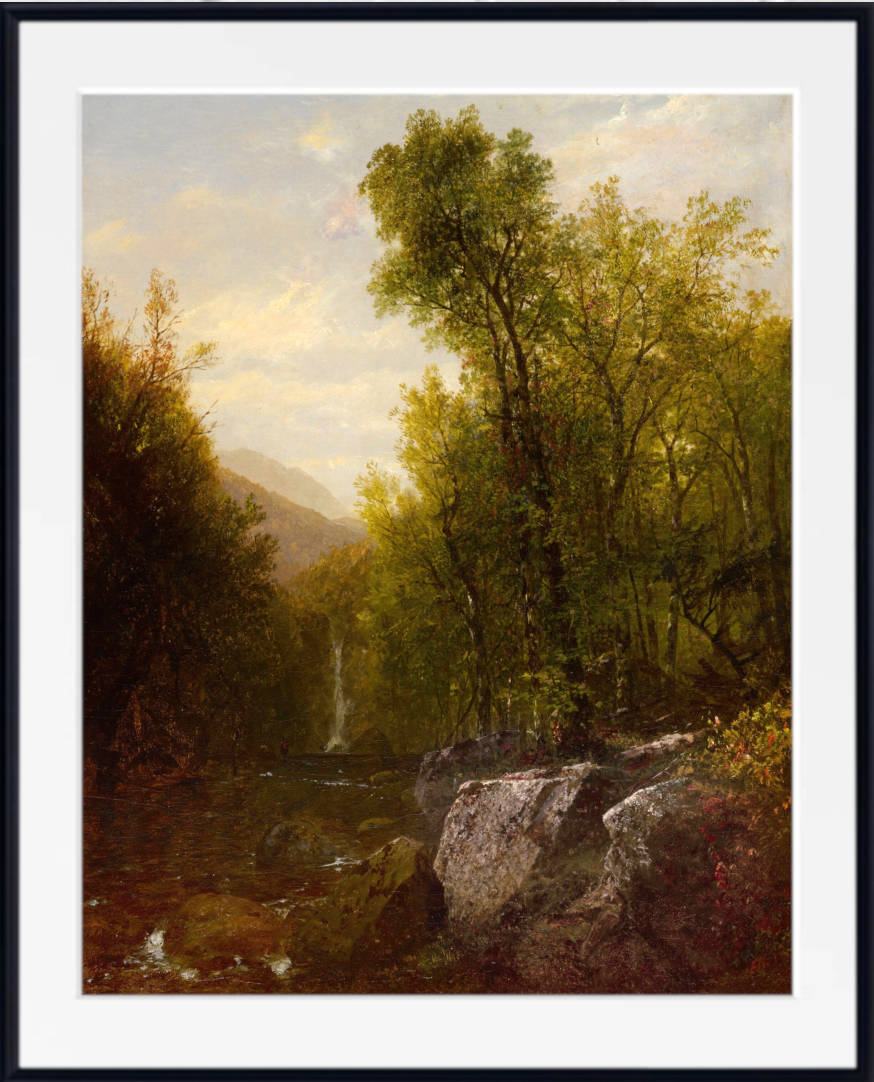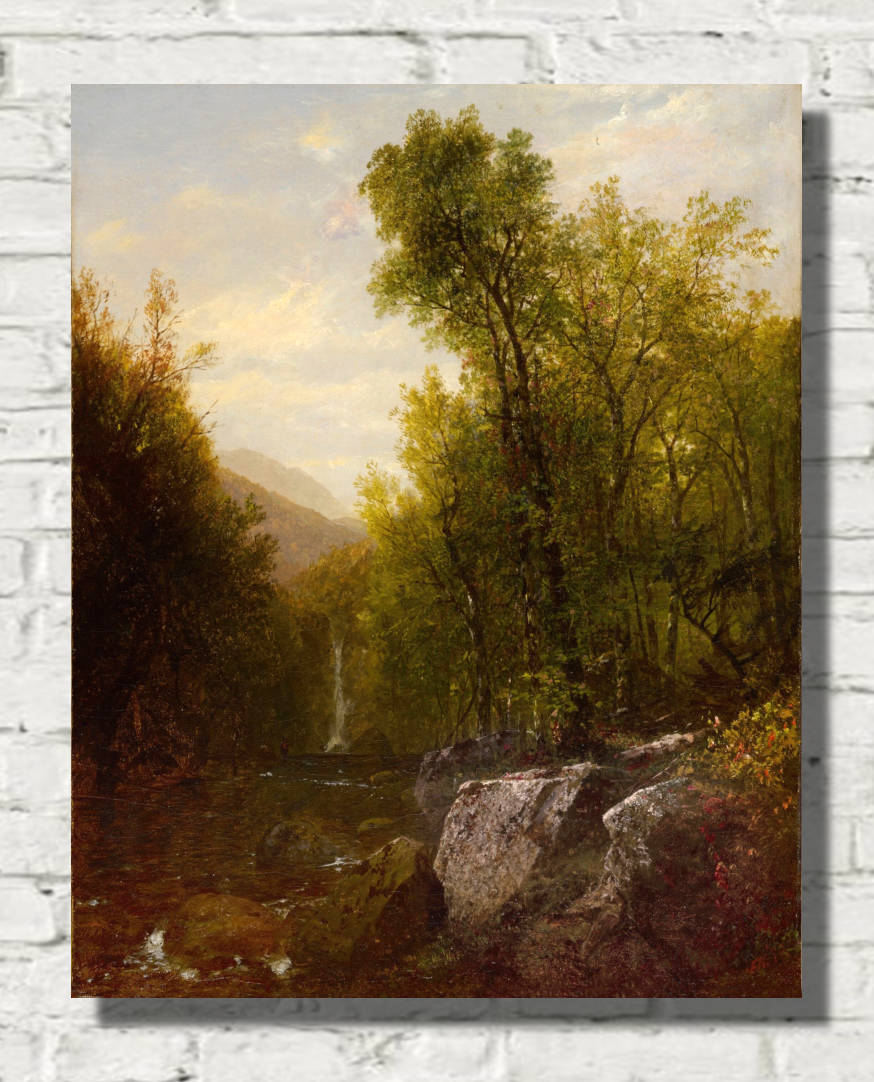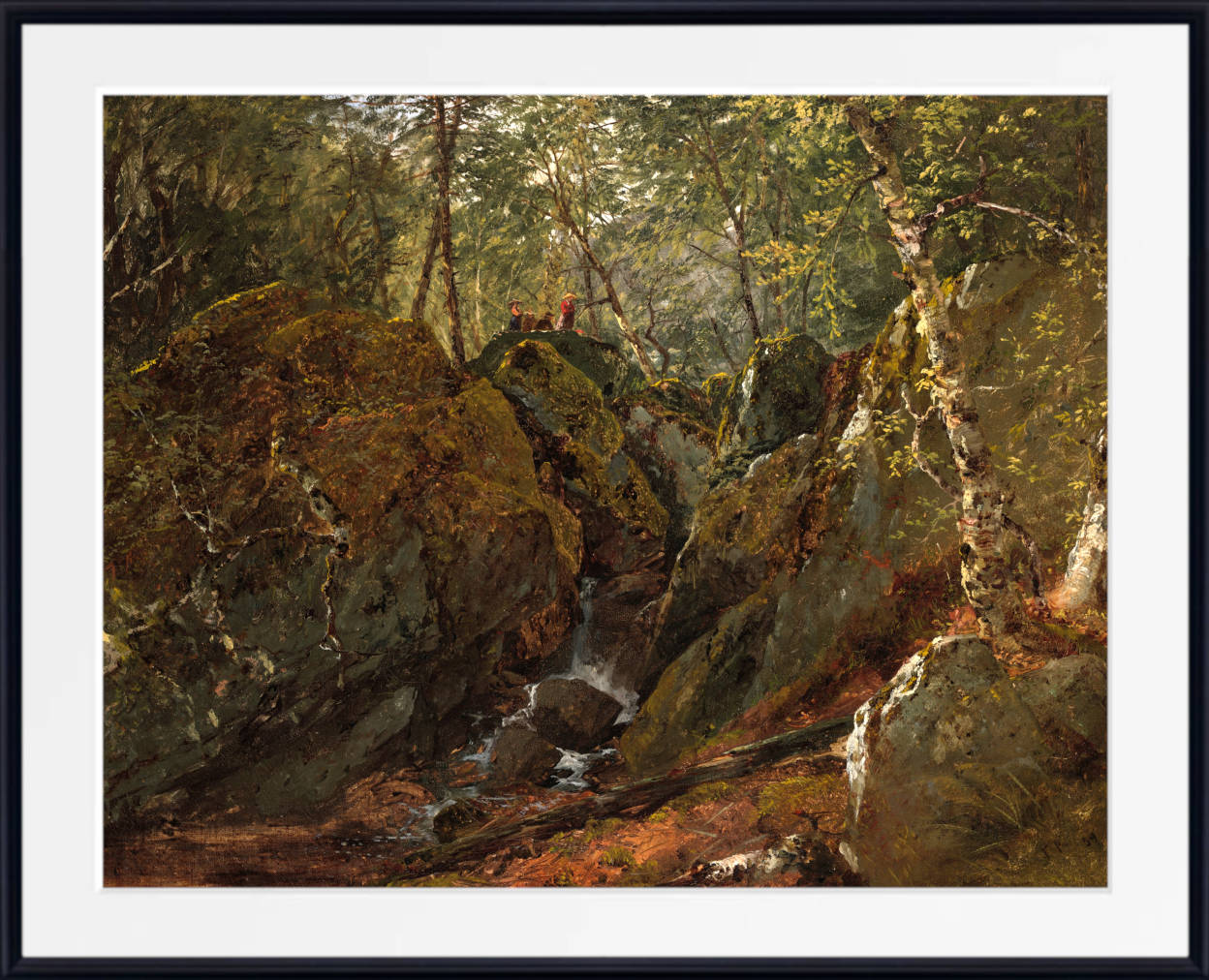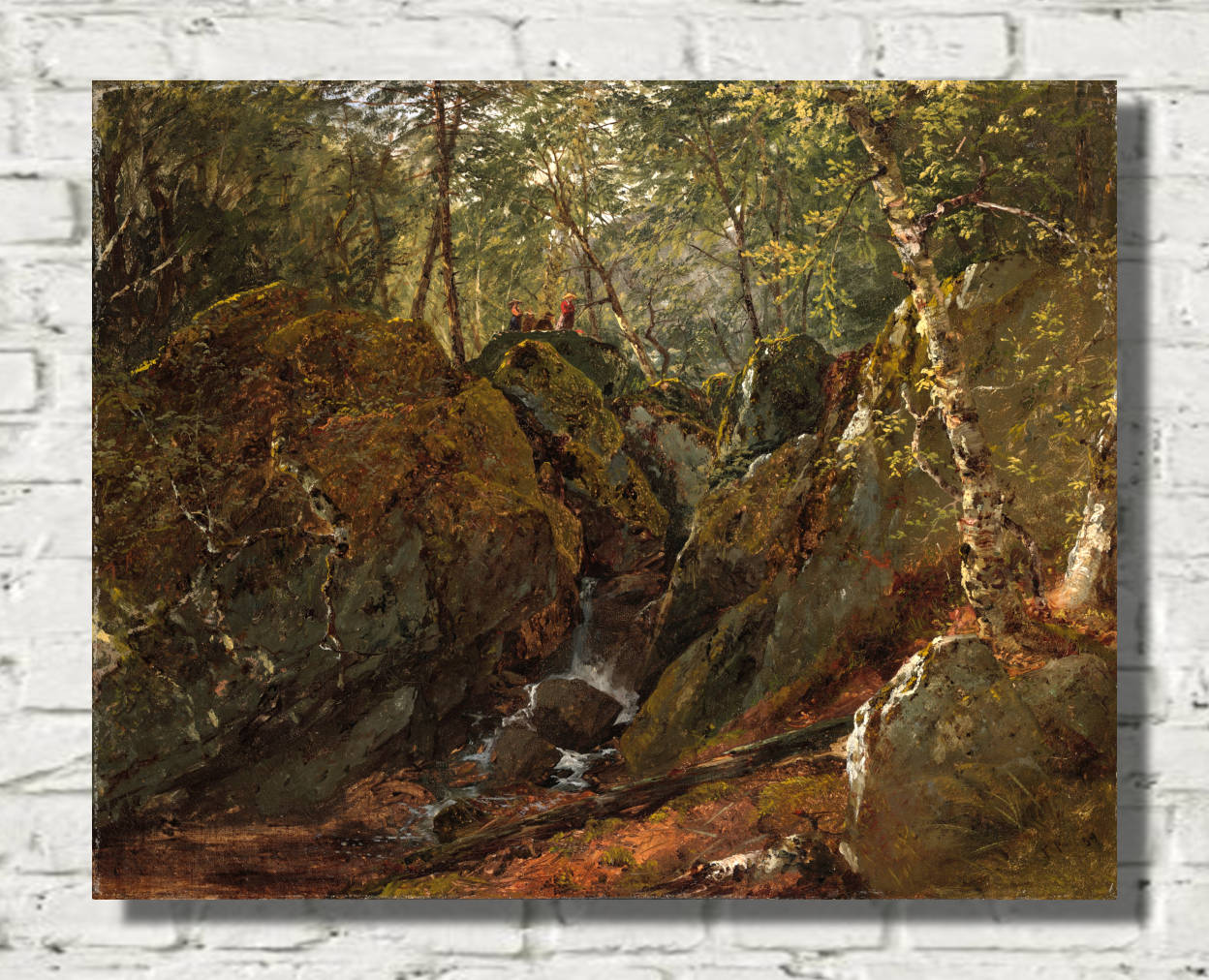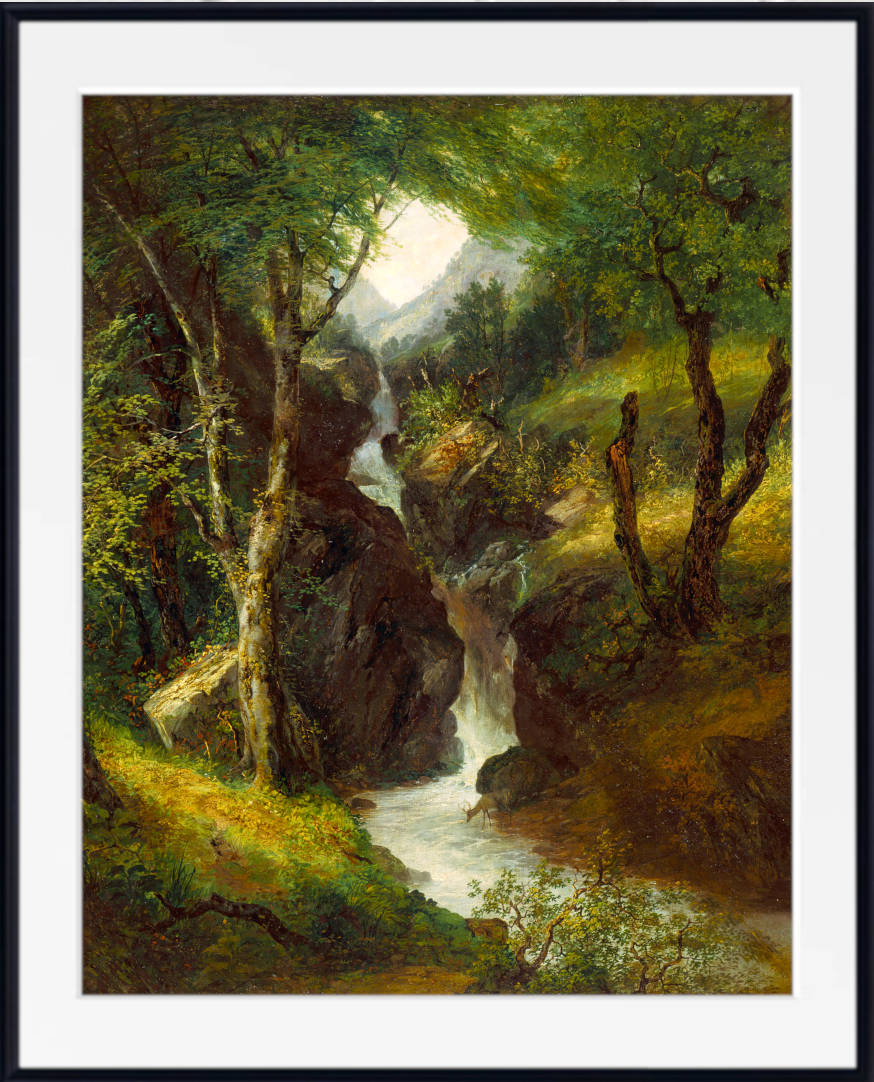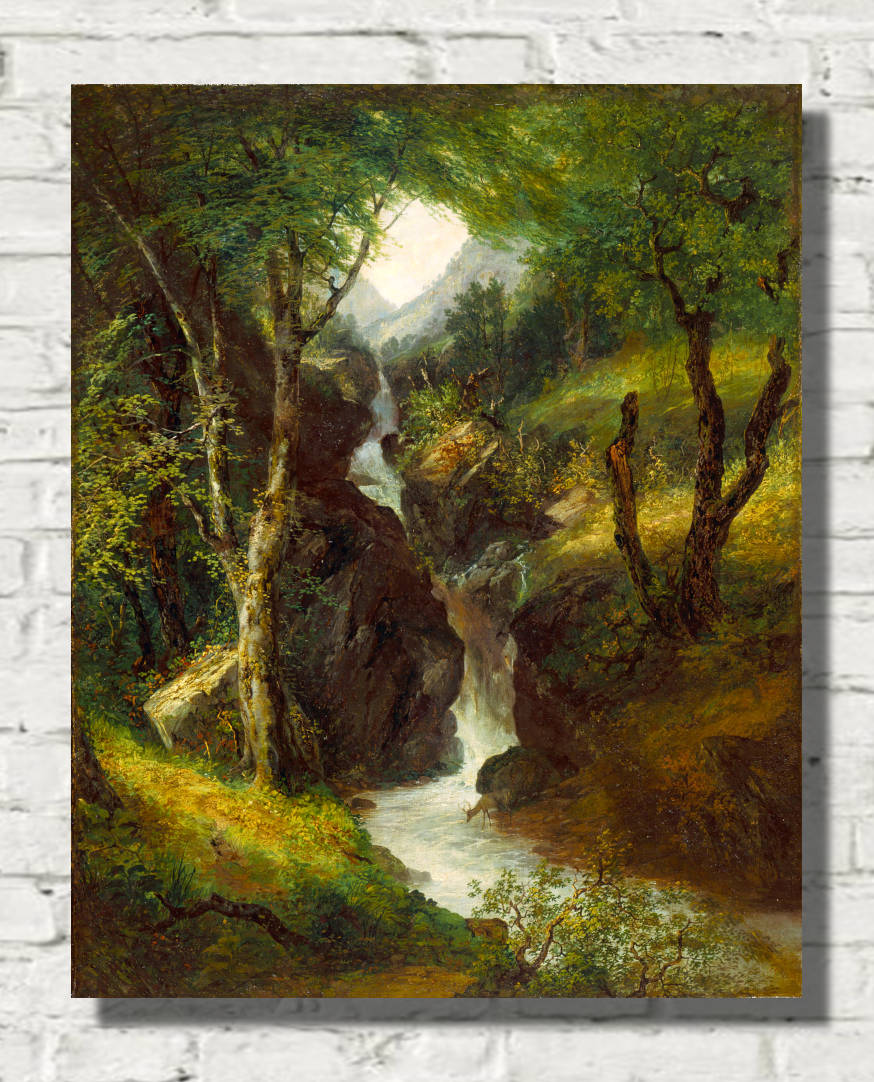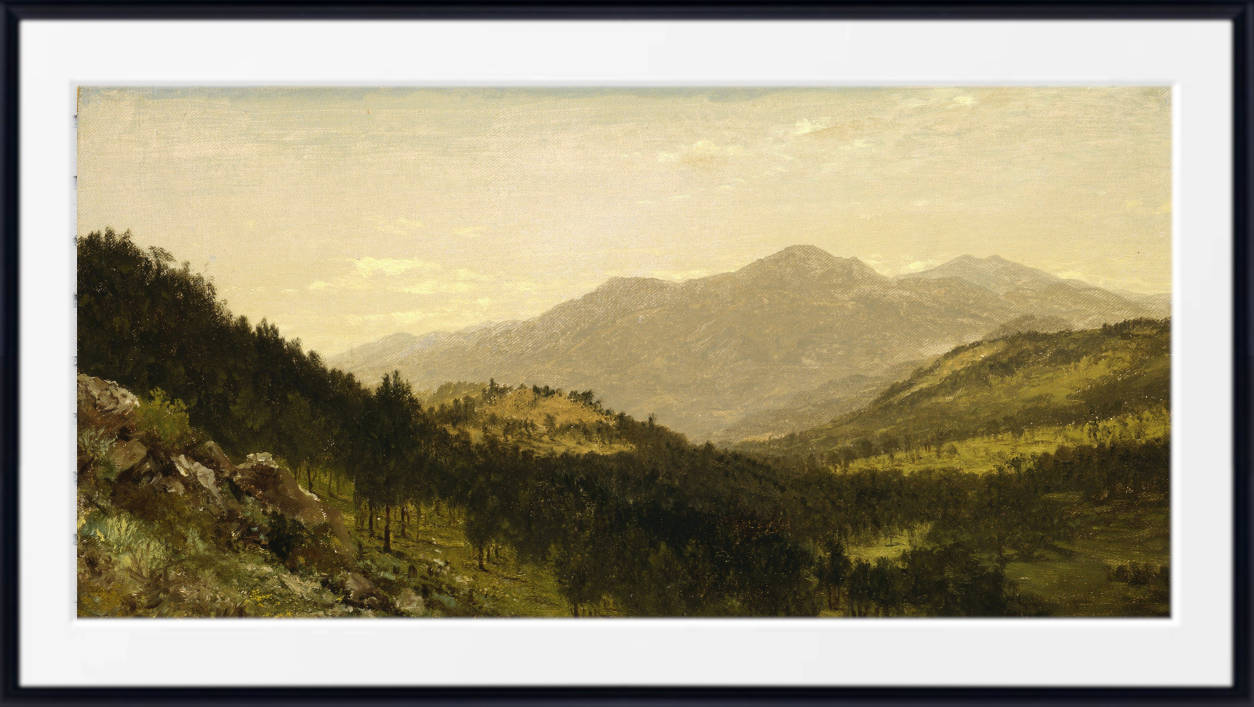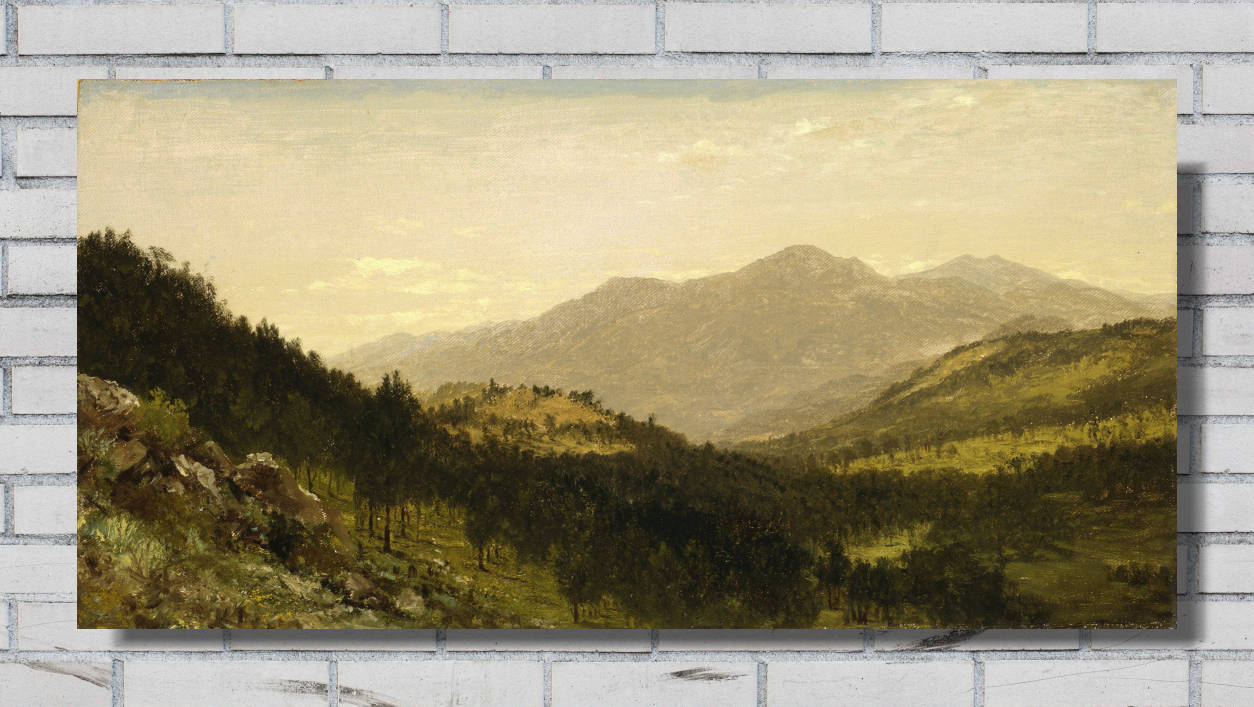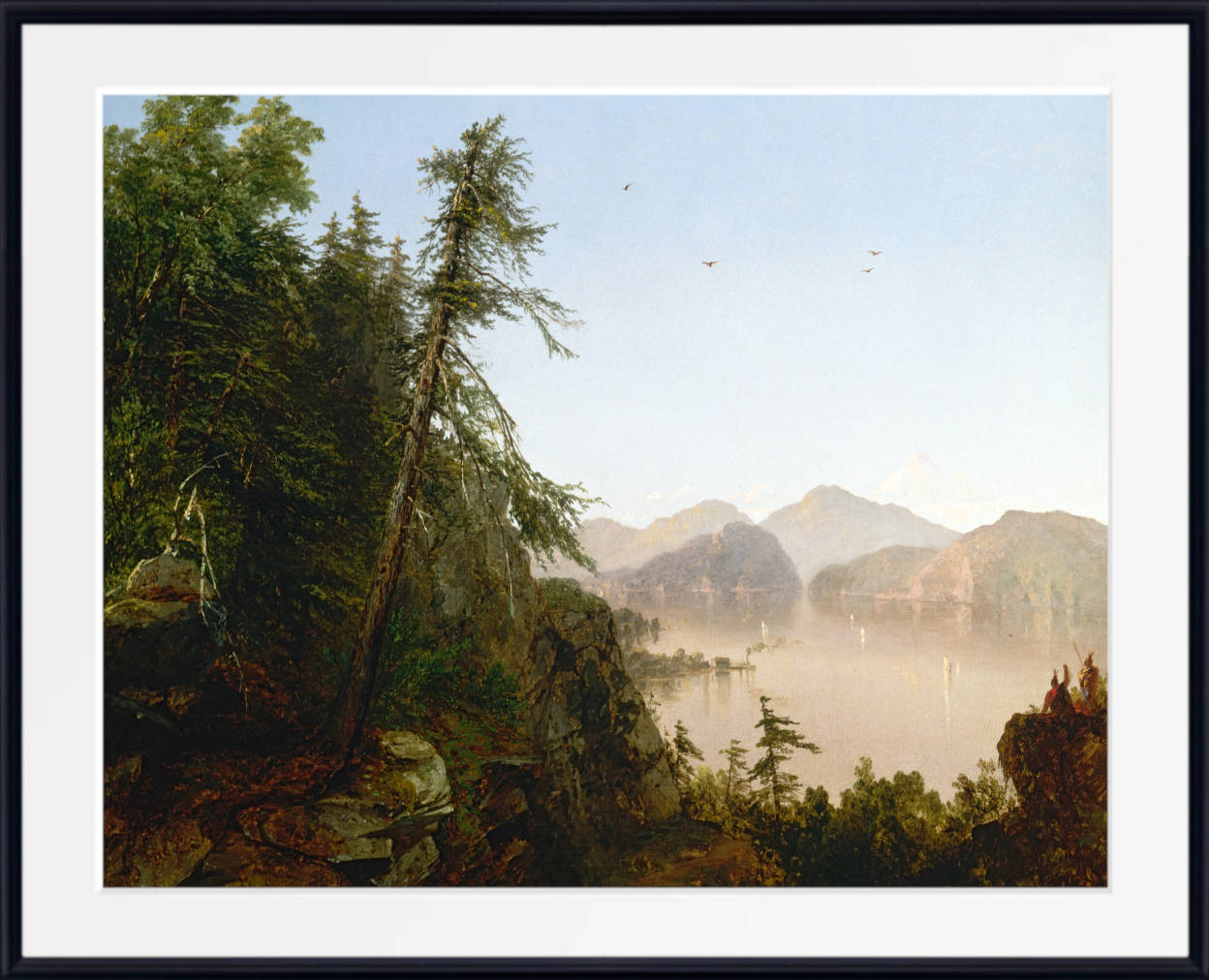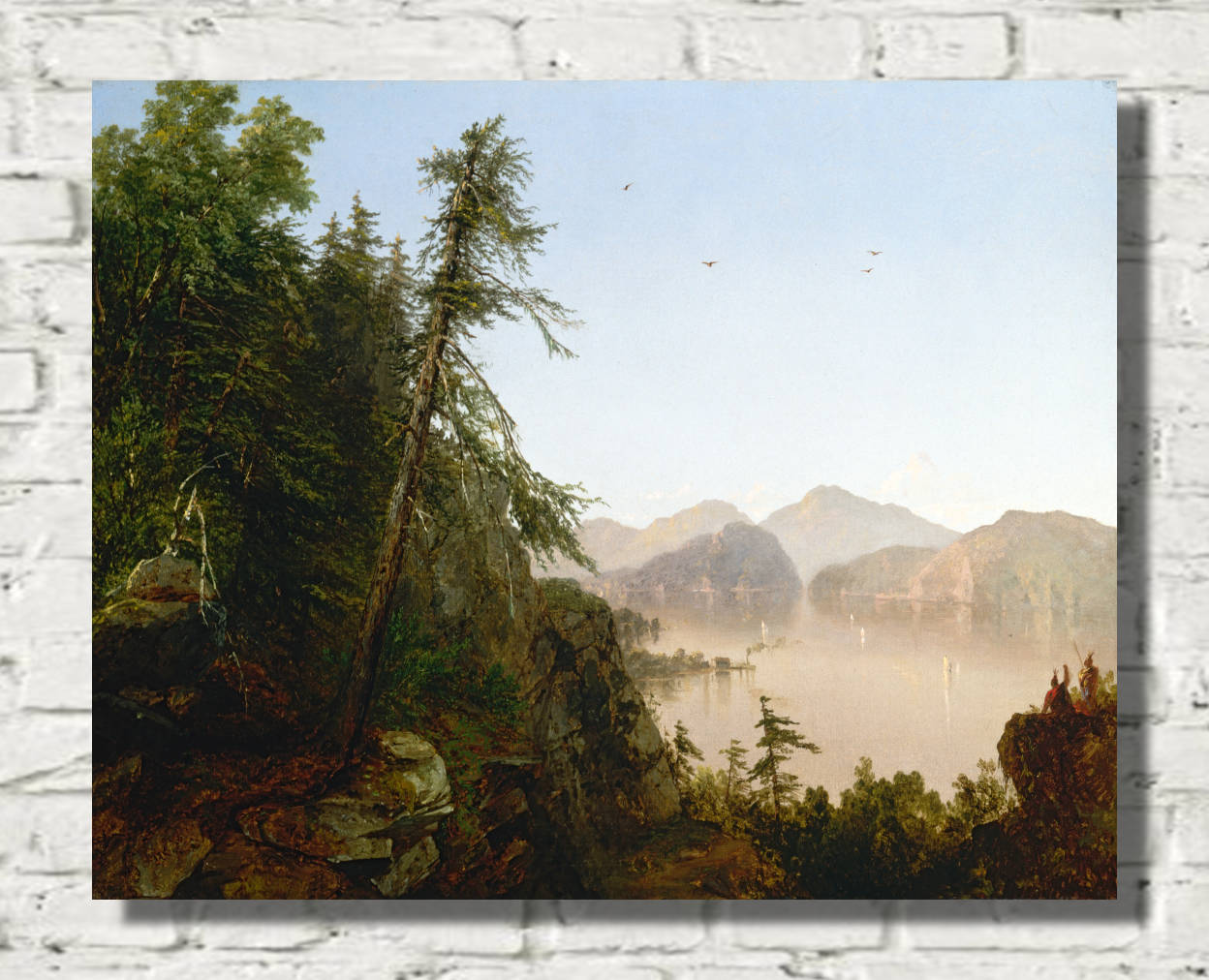Table of Contents:[hide]
John Frederick Kensett (1816-1872) emerged as one of the most influential American landscape painters of the 19th century, distinguished by his mastery of light and atmosphere in the Luminist style. As a second-generation member of the Hudson River School, Kensett developed a unique aesthetic that combined precise detail with ethereal luminosity, setting him apart from his contemporaries.
Early Life and Artistic Development
Born in Cheshire, Connecticut, Kensett began his artistic career as an engraver, following in his father's footsteps. This early training in precision and detail would later influence his painting technique. After studying in Europe from 1840 to 1847, he returned to America with a refined artistic vision that would help define American Luminism.
Landing at Sabbath Day Point (c. 1853)
Artistic Style and Innovation
Kensett's mature style is characterized by a remarkable ability to capture atmospheric effects and tranquil scenes with extraordinary precision. His works often feature expansive views with carefully balanced compositions, where light plays a crucial role in creating mood and depth. Unlike the dramatic scenes favored by first-generation Hudson River School artists, Kensett preferred quieter, more contemplative views that emphasized harmony between nature and light.
Analysis of Key Works
Lake George (1869)
This masterpiece, housed in the Metropolitan Museum of Art, exemplifies Kensett's mature Luminist style. The painting presents a view of Lake George that transforms the actual landscape into a meditation on light and atmosphere. The composition is notable for its horizontal structure and minimal elements, with the lake's surface acting as a mirror for the sky's luminosity. The precise rendering of rocks in the foreground demonstrates Kensett's technical mastery, while the ethereal treatment of distant mountains creates a sense of atmospheric perspective that draws the viewer into the scene.
Beach at Beverly (1860)
The Beach at Beverly represents Kensett's coastal paintings at their finest. This work showcases his ability to capture the interaction of light with water and sand, creating a scene of remarkable serenity. The painting's composition is carefully structured with horizontal bands of beach, sea, and sky, each rendered with subtle gradations of color. The minimal human presence in the scene emphasizes the contemplative nature of Kensett's vision, while the precise handling of atmospheric effects demonstrates his technical virtuosity.
On the Coast (1870)
Created during his later period, On the Coast represents the culmination of Kensett's artistic development. The work demonstrates his masterful handling of rock formations, water, and sky, unified by an silvery light that suffuses the entire composition. The painting's spare composition and emphasis on geometric forms anticipates modernist abstractions while remaining firmly grounded in careful observation of nature. Art historians have noted the work's innovative use of space and the subtle modulation of tones that create a sense of profound stillness.
Legacy and Influence
Kensett's influence on American art extends beyond his immediate contemporaries. His refined approach to landscape painting, emphasizing clarity, light, and geometric simplicity, helped establish a distinctly American artistic vocabulary. Recent scholarship has highlighted his role in developing techniques that would influence both late 19th-century Tonalism and early modernist abstraction.
Market Recognition
The art market has increasingly recognized Kensett's significance, with major works commanding substantial prices at auction. According to Christie's auction records, his paintings have achieved prices exceeding $1 million, reflecting growing appreciation for his unique contribution to American art. Sotheby's notes that his later coastal scenes, in particular, are highly sought after for their sophisticated handling of light and atmosphere.
Related Articles
Hudson River School
American Luminism
References
- Driscoll, J. P., & Howat, J. K. (1985). John Frederick Kensett: An American Master. Worcester Art Museum.
- Christie's. (2019). "Important American Paintings: John Frederick Kensett's Coastal Scenes." Auction Catalogue Essay.
- Sotheby's. (2018). "American Art: The Luminist Vision of J.F. Kensett." Sale N09825 Catalogue.
- Wilmerding, J. (1980). American Light: The Luminist Movement 1850-1875. National Gallery of Art.
- Bedell, R. (2001). The Anatomy of Nature: Geology & American Landscape Painting, 1825-1875. Princeton University Press.
- Metropolitan Museum of Art. (2016). "John Frederick Kensett: Lake George and the American Landscape." Exhibition Catalogue.

